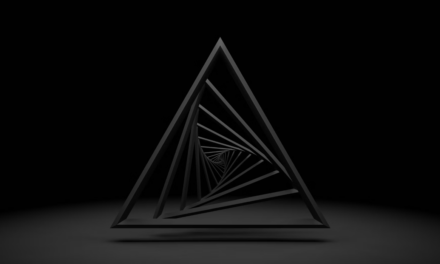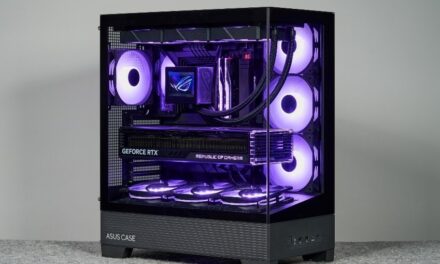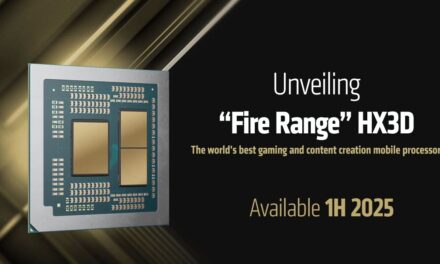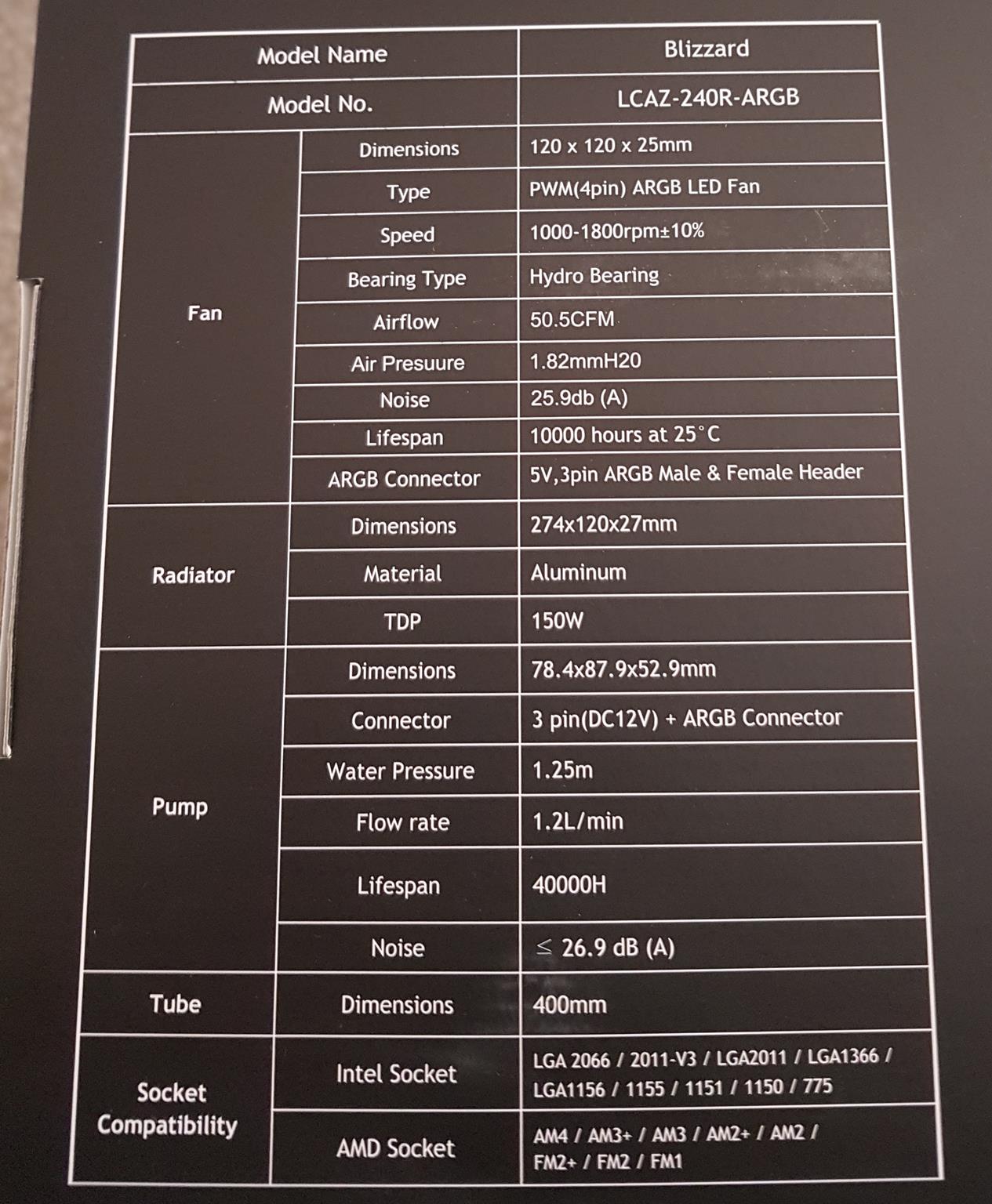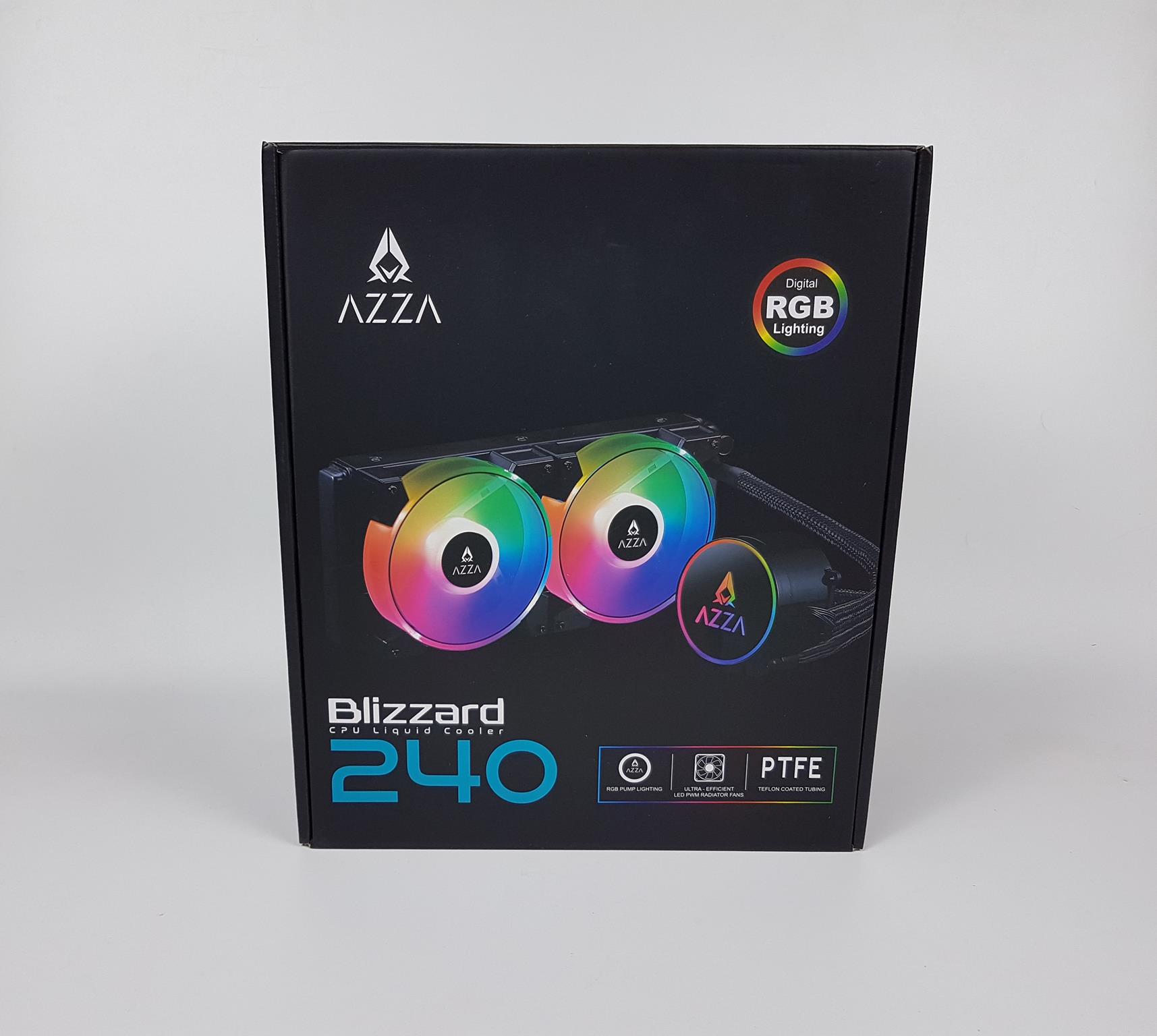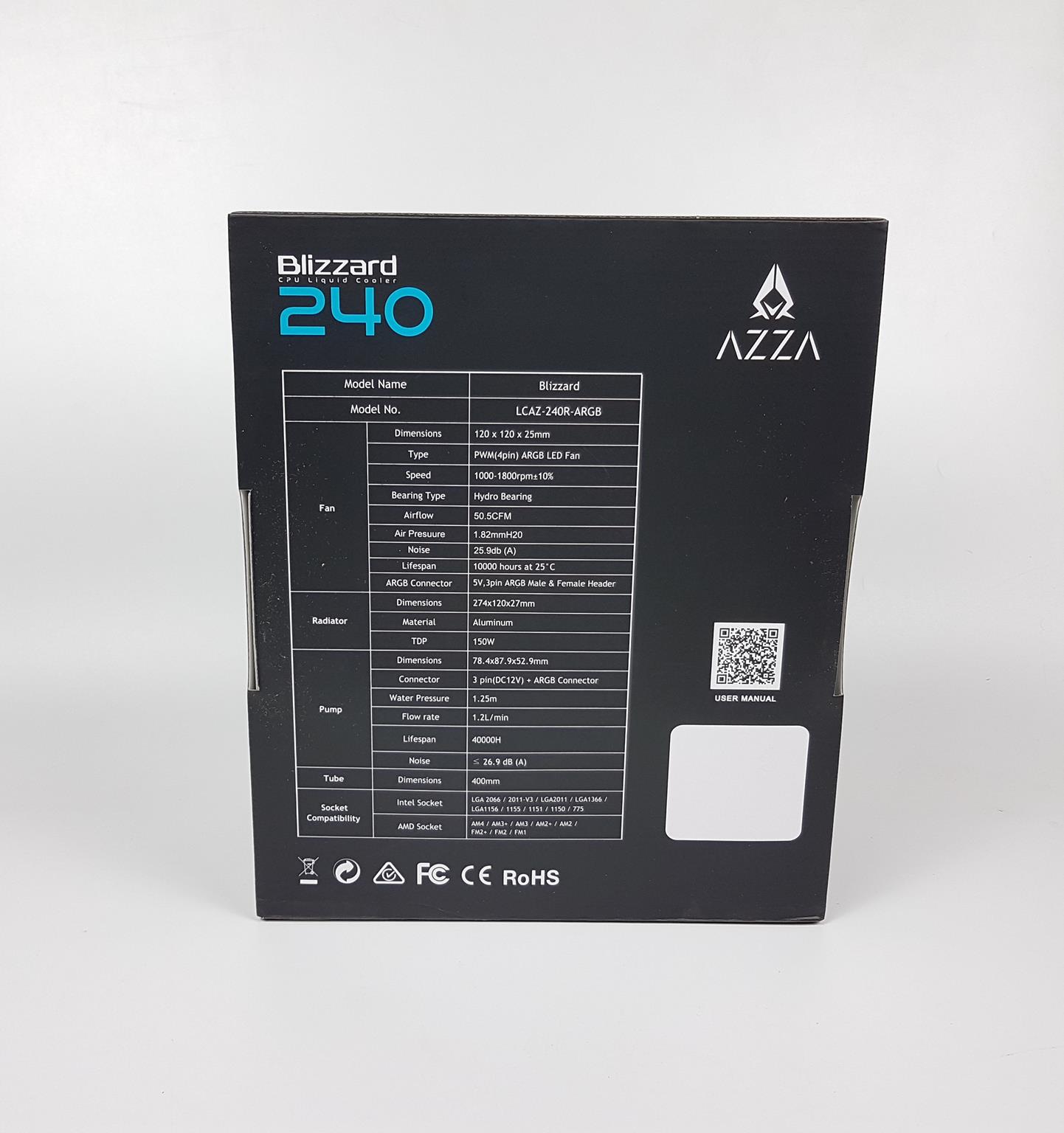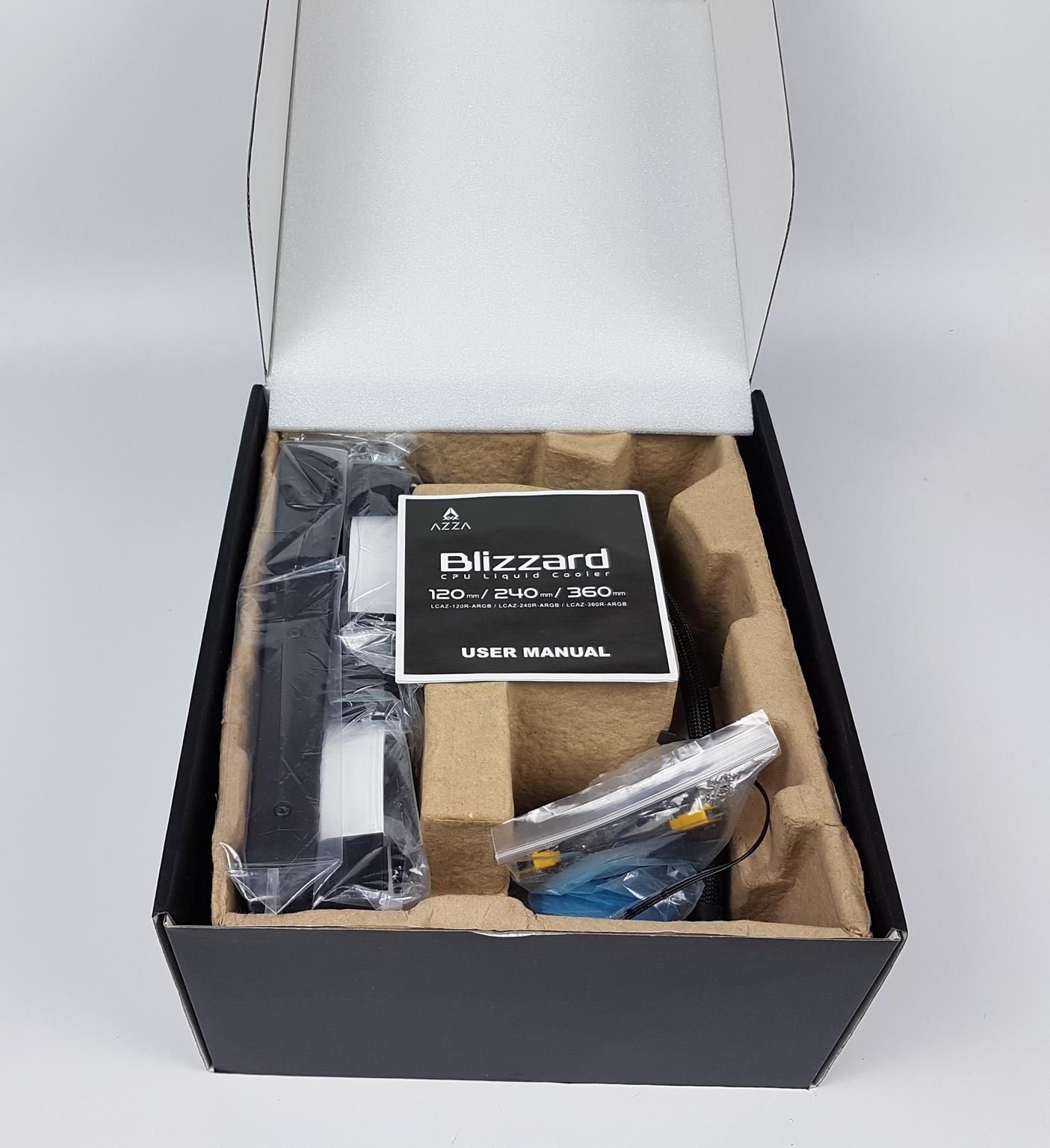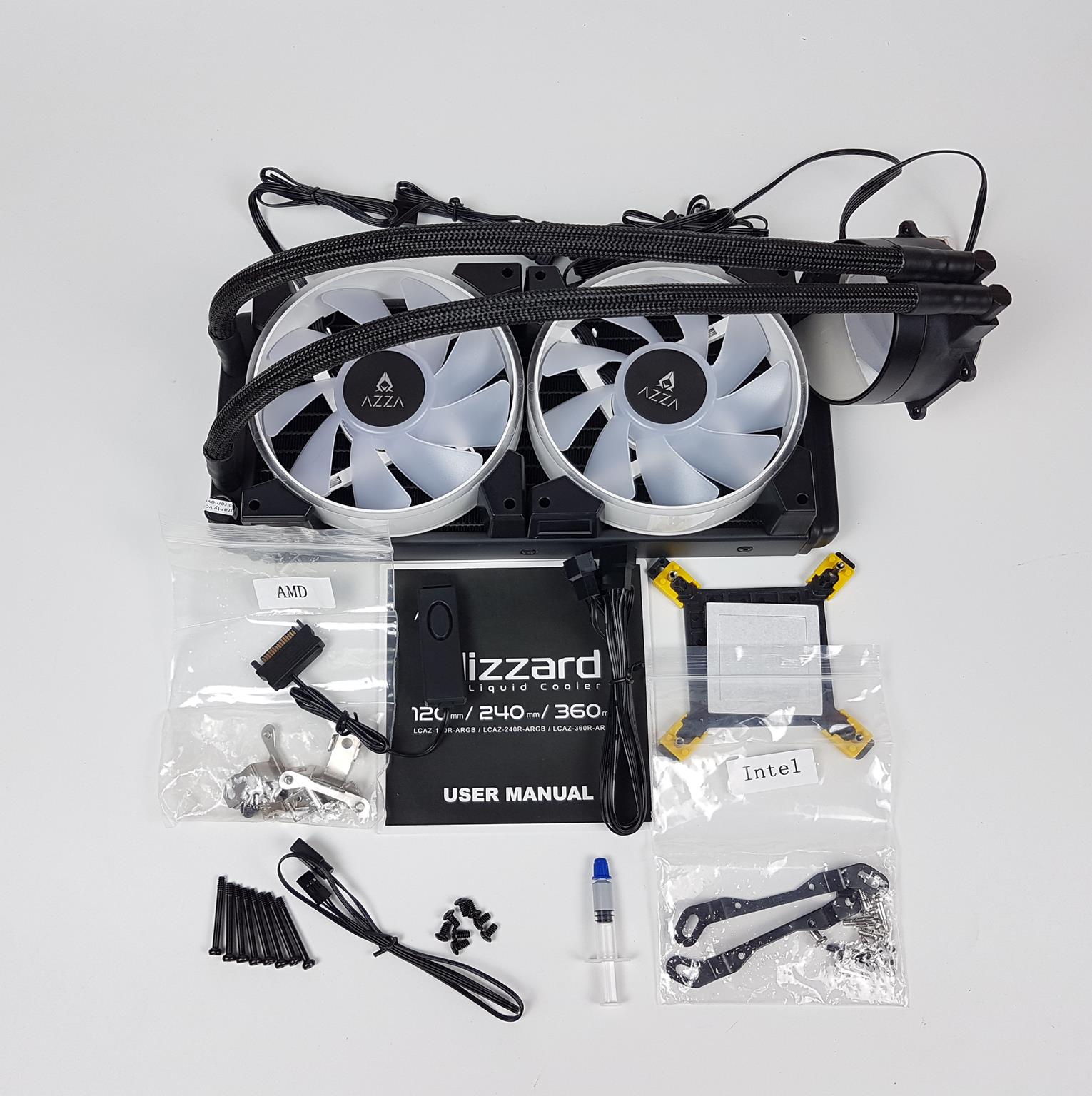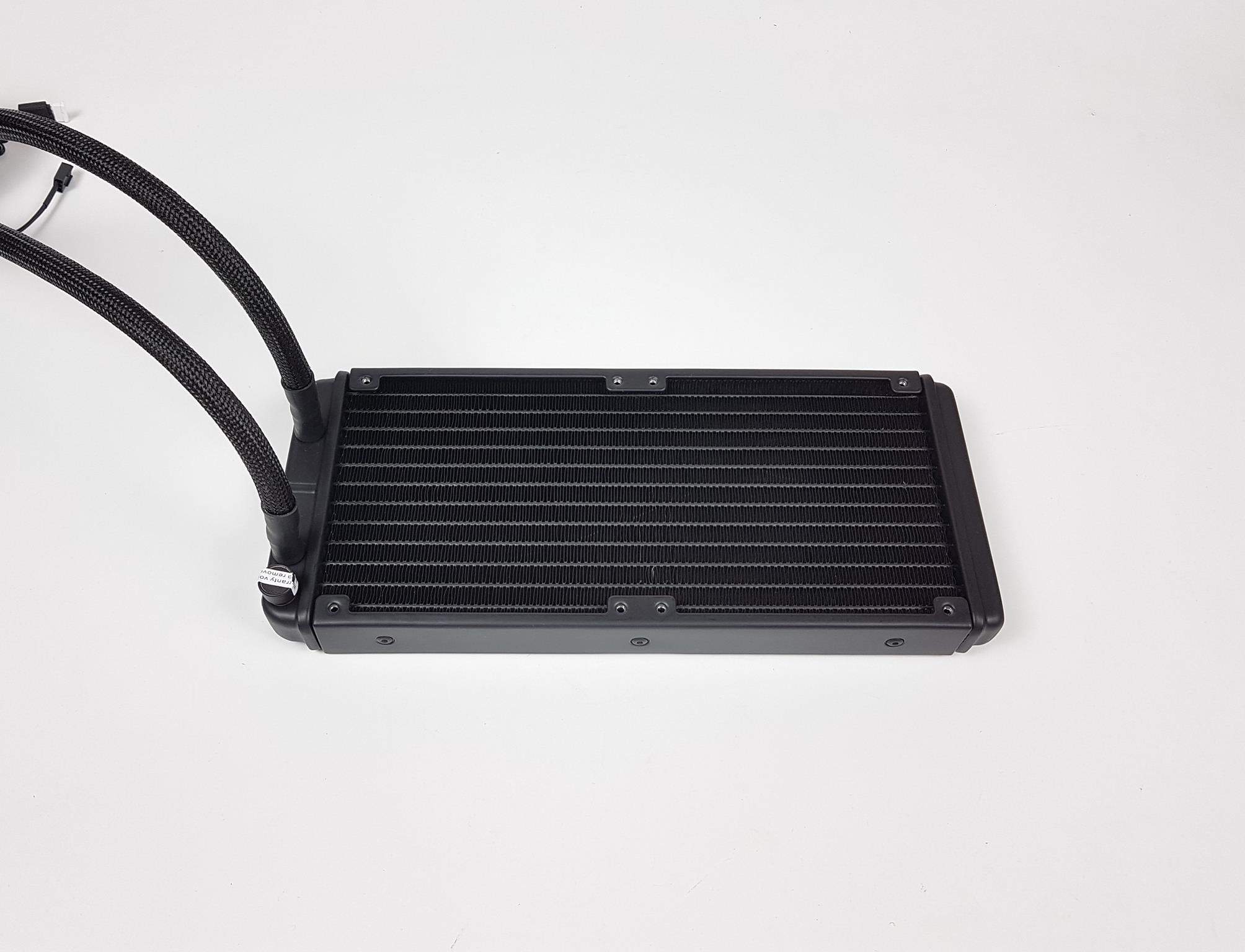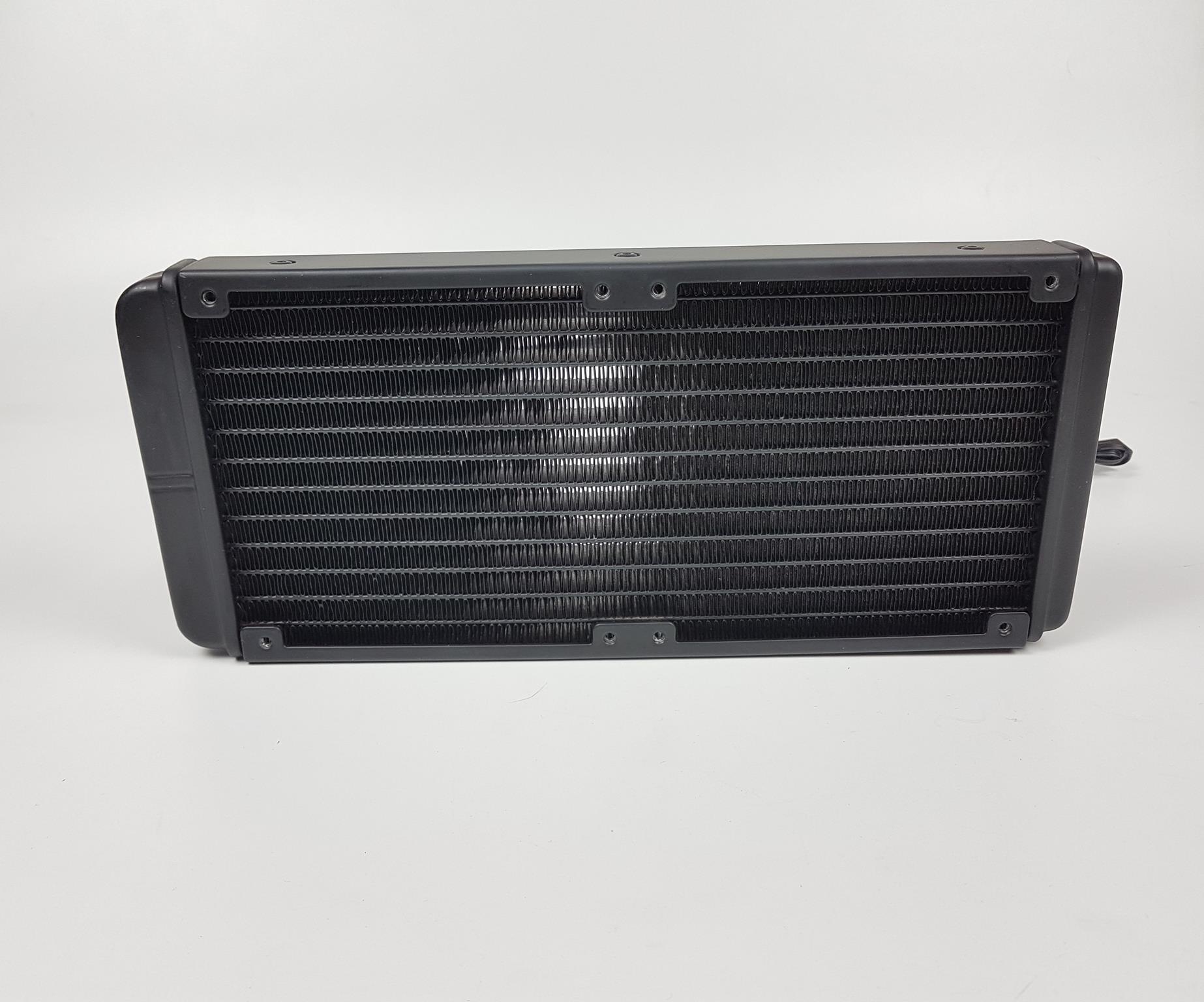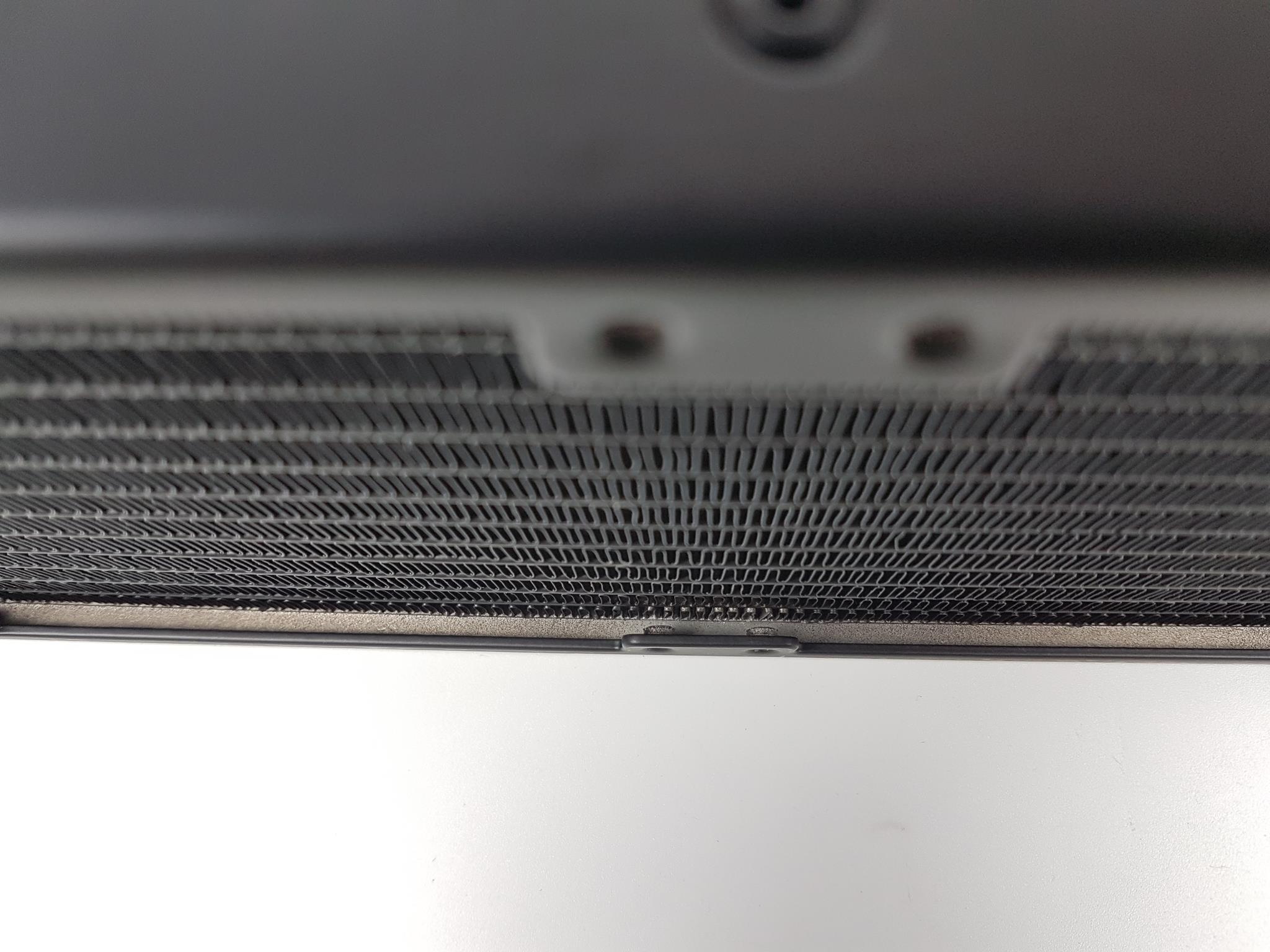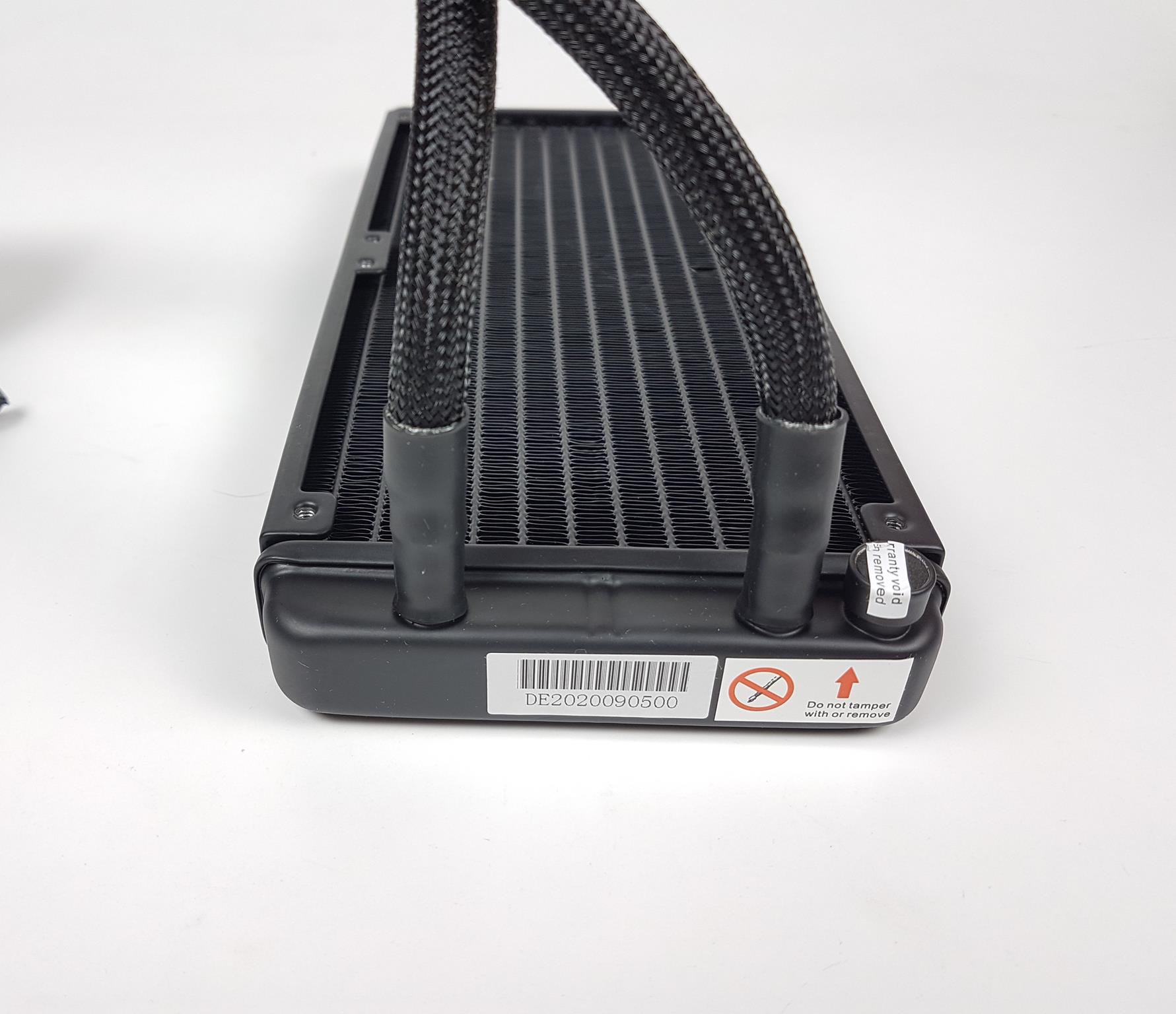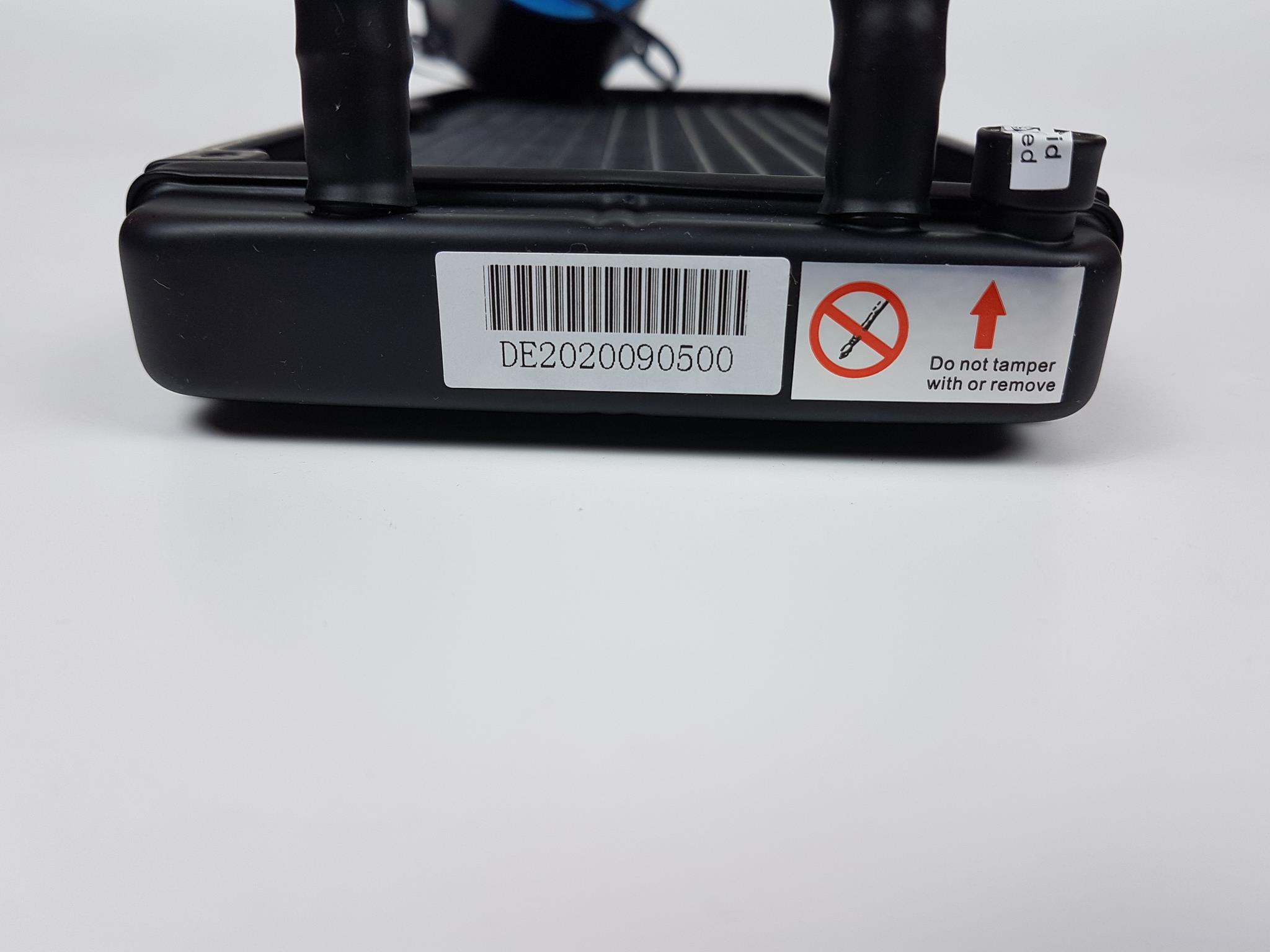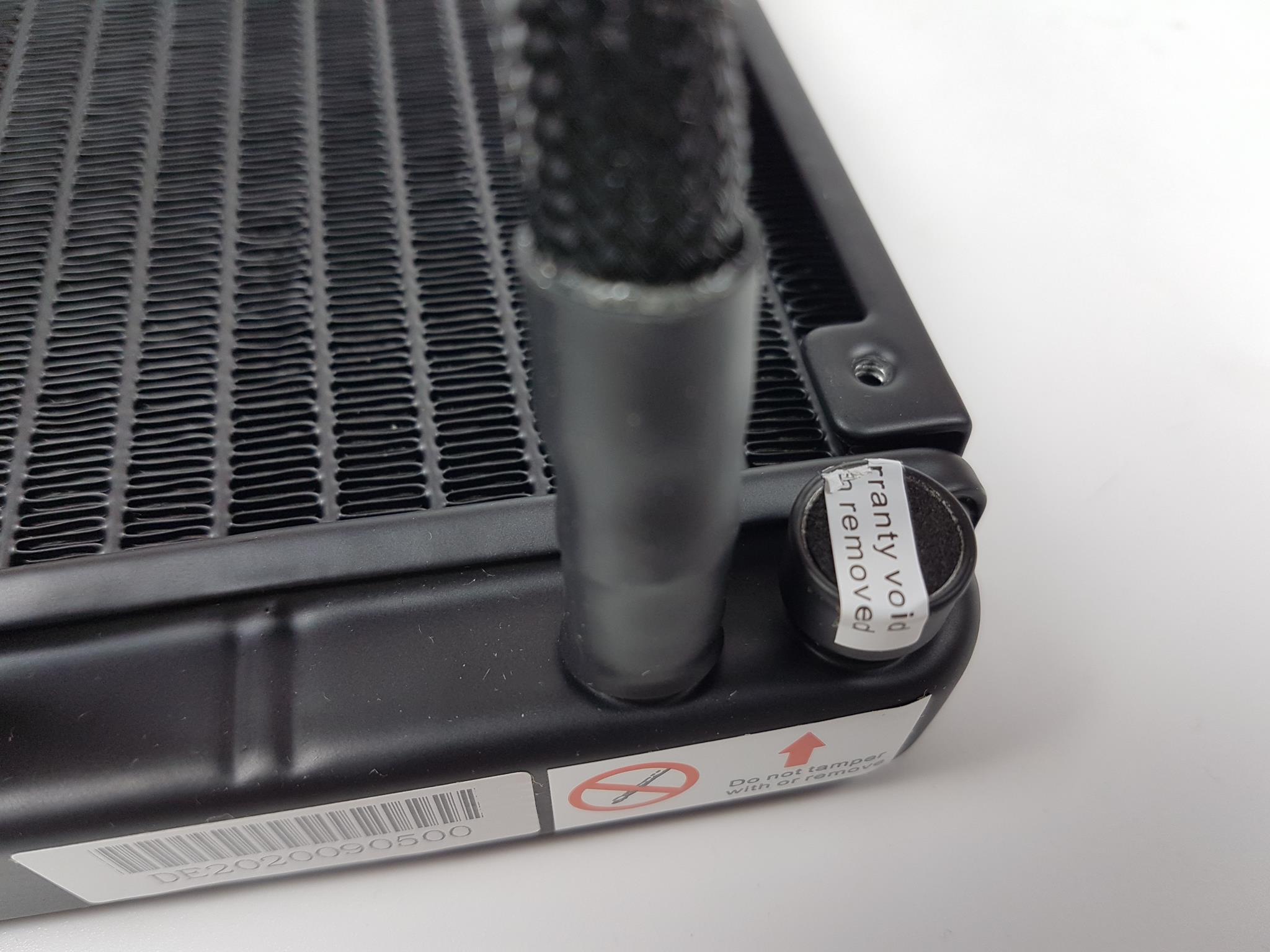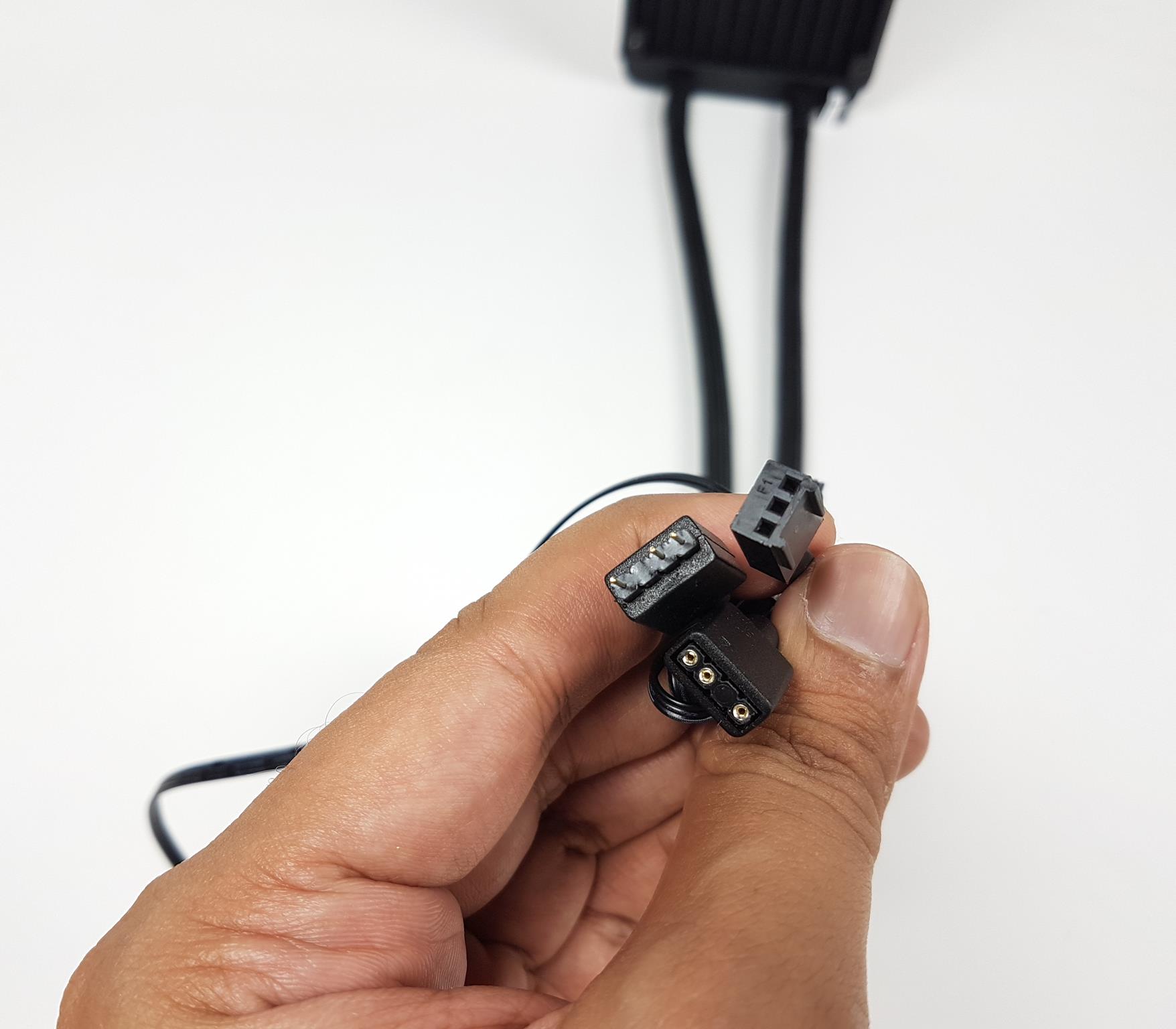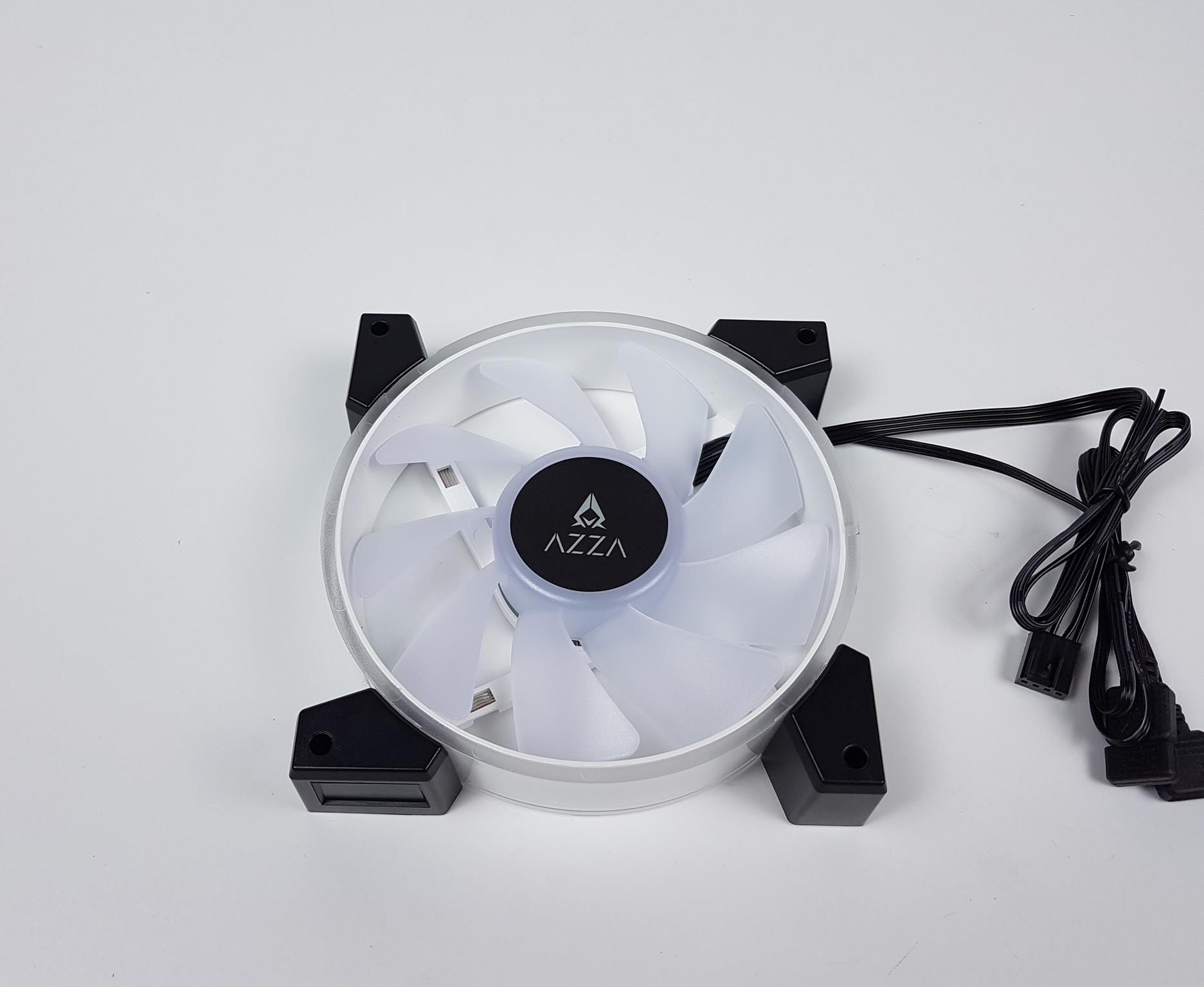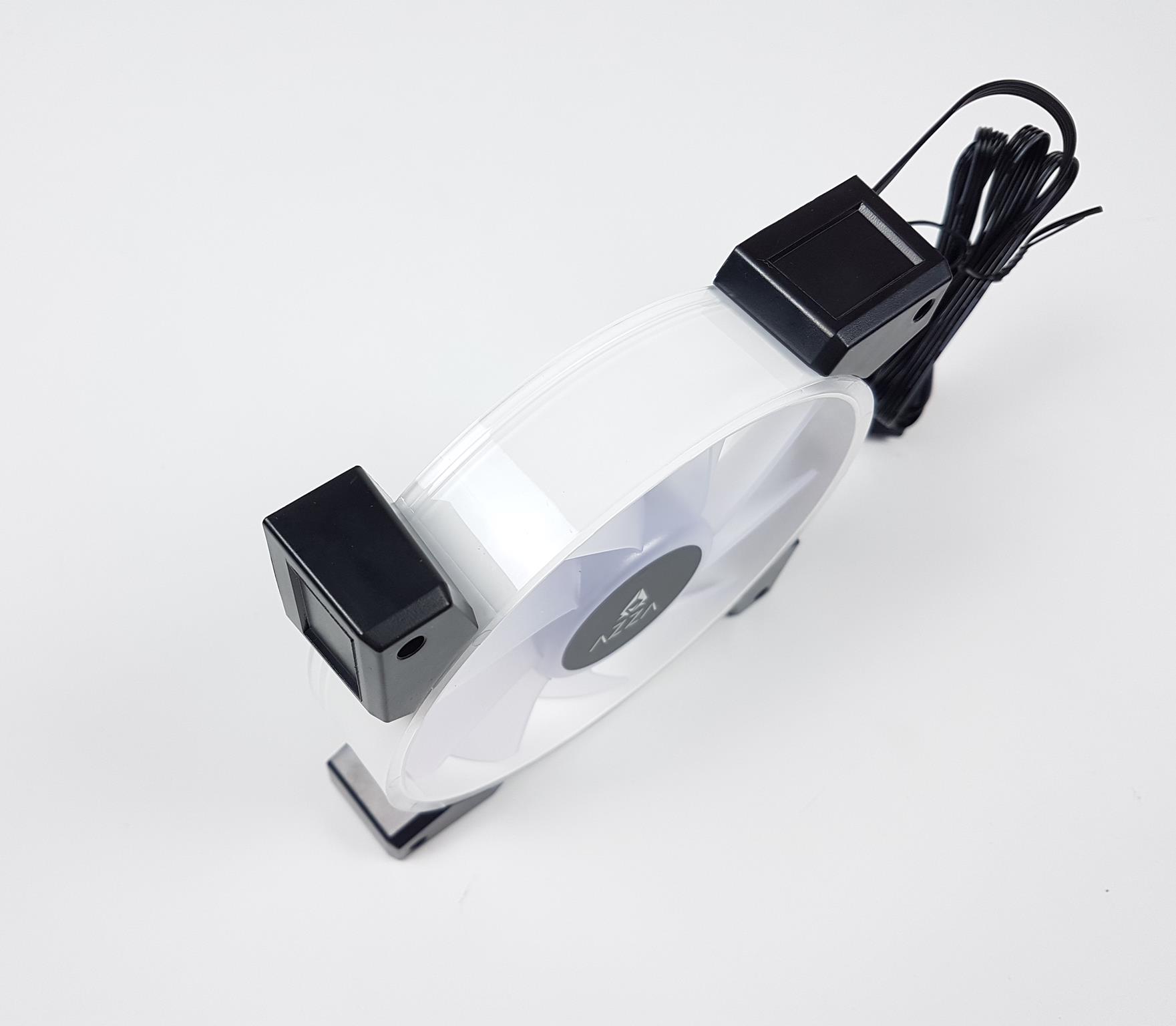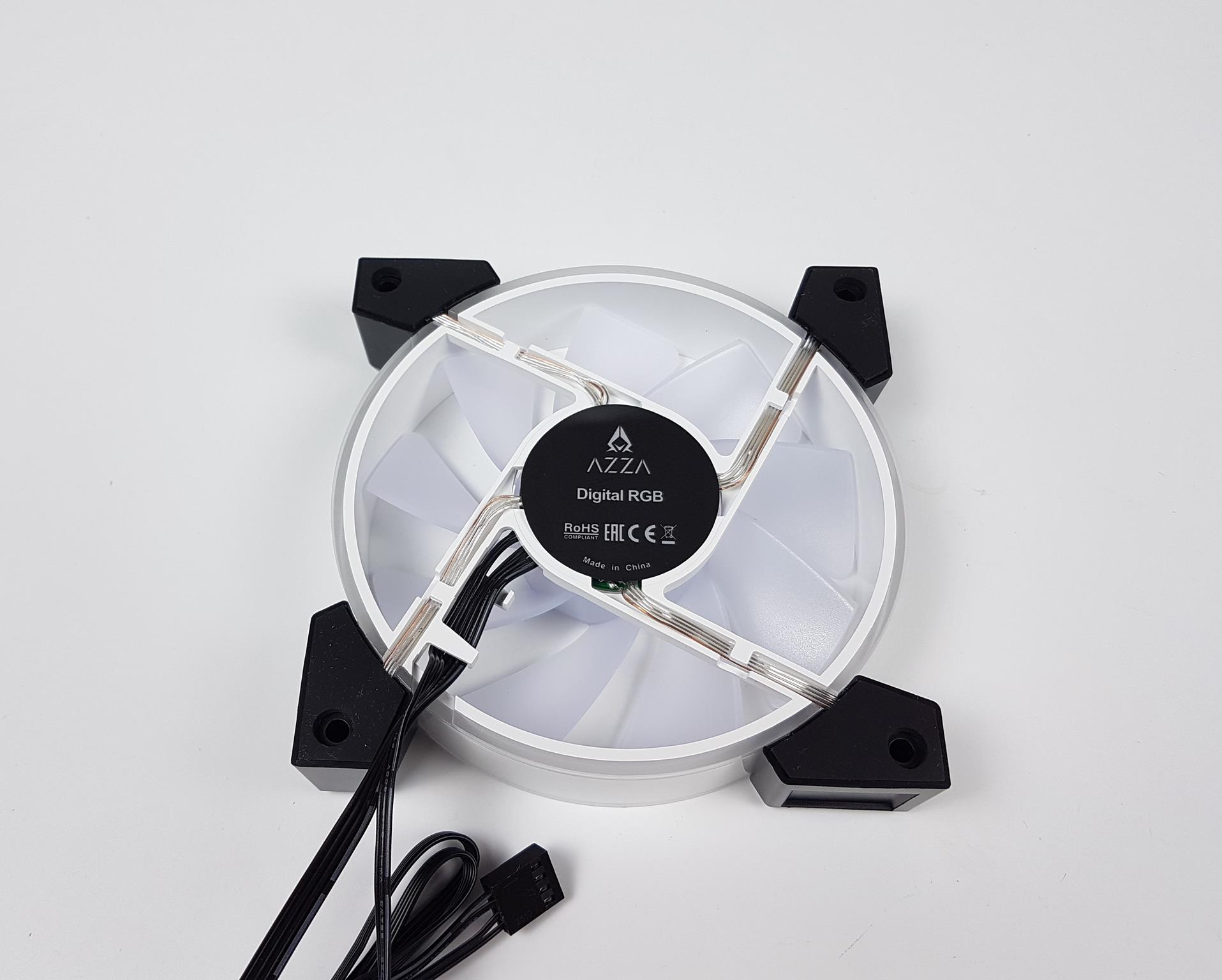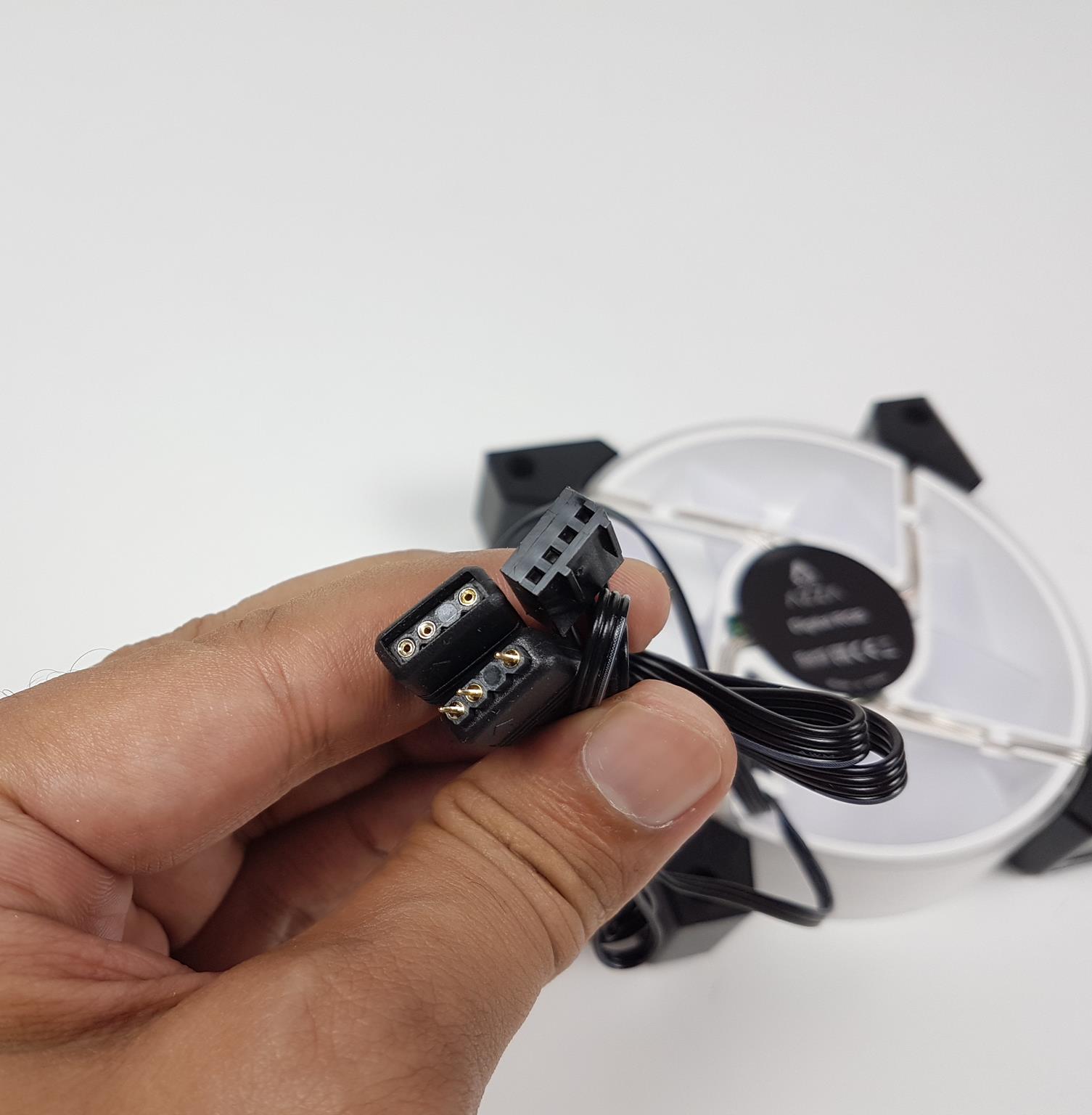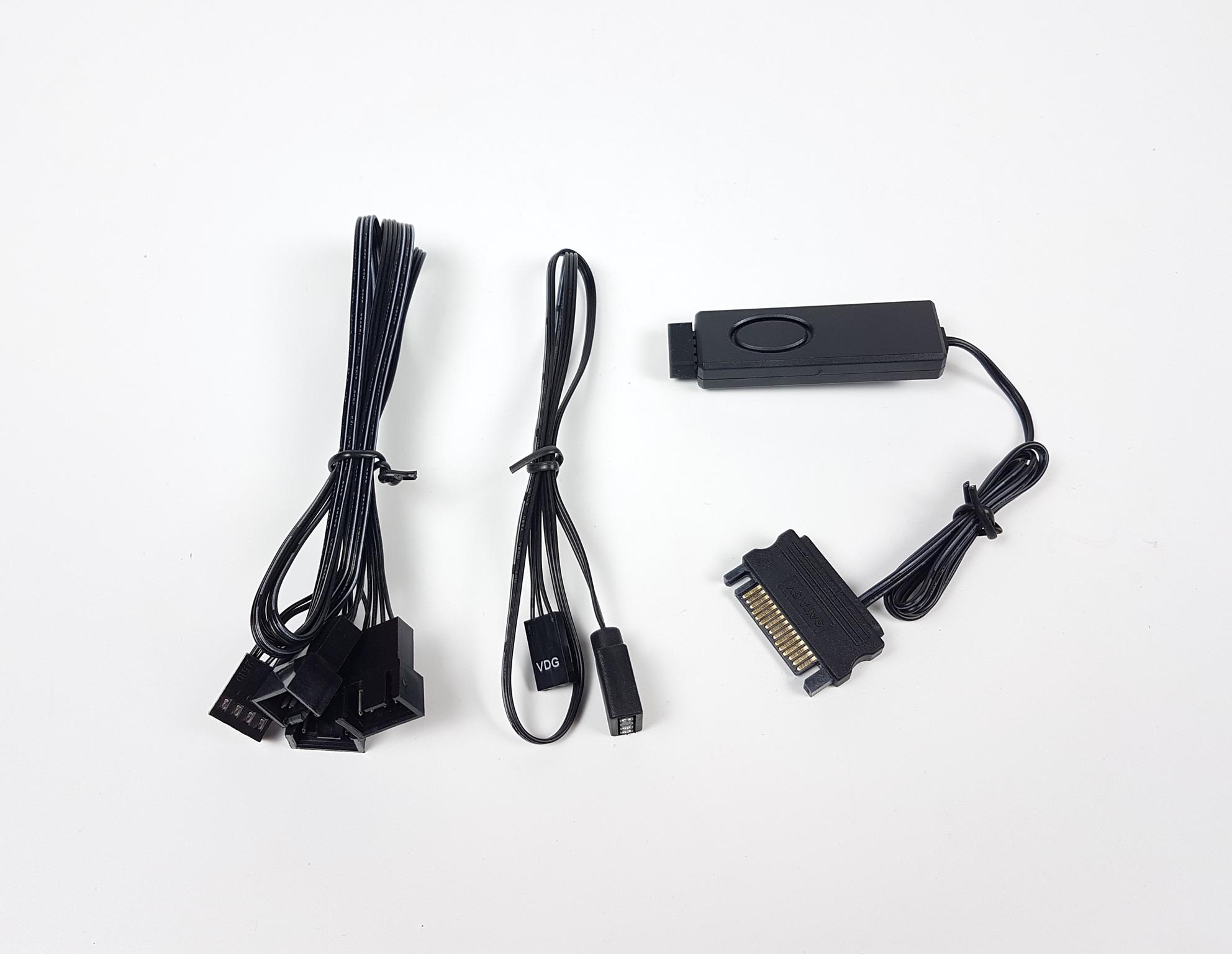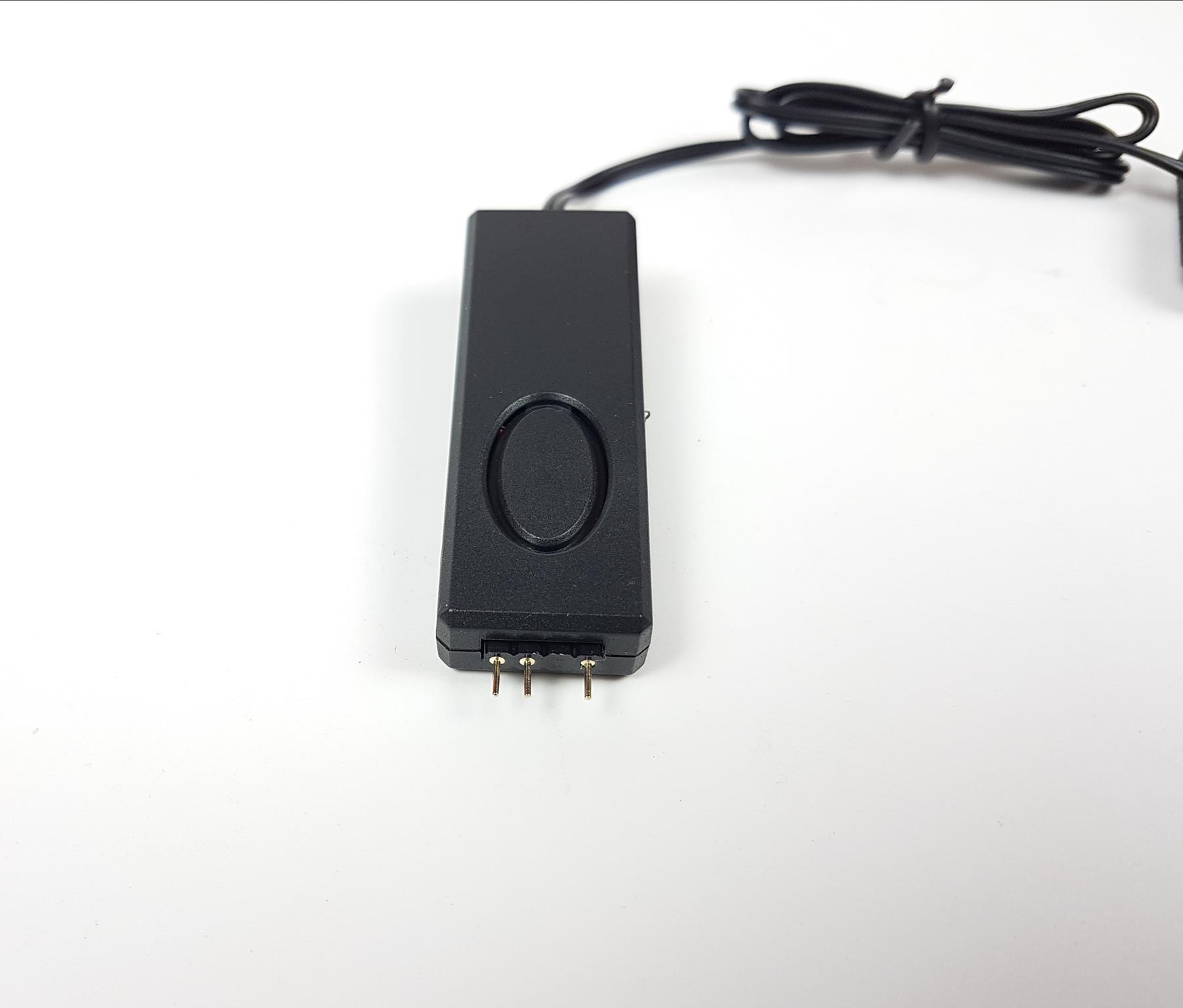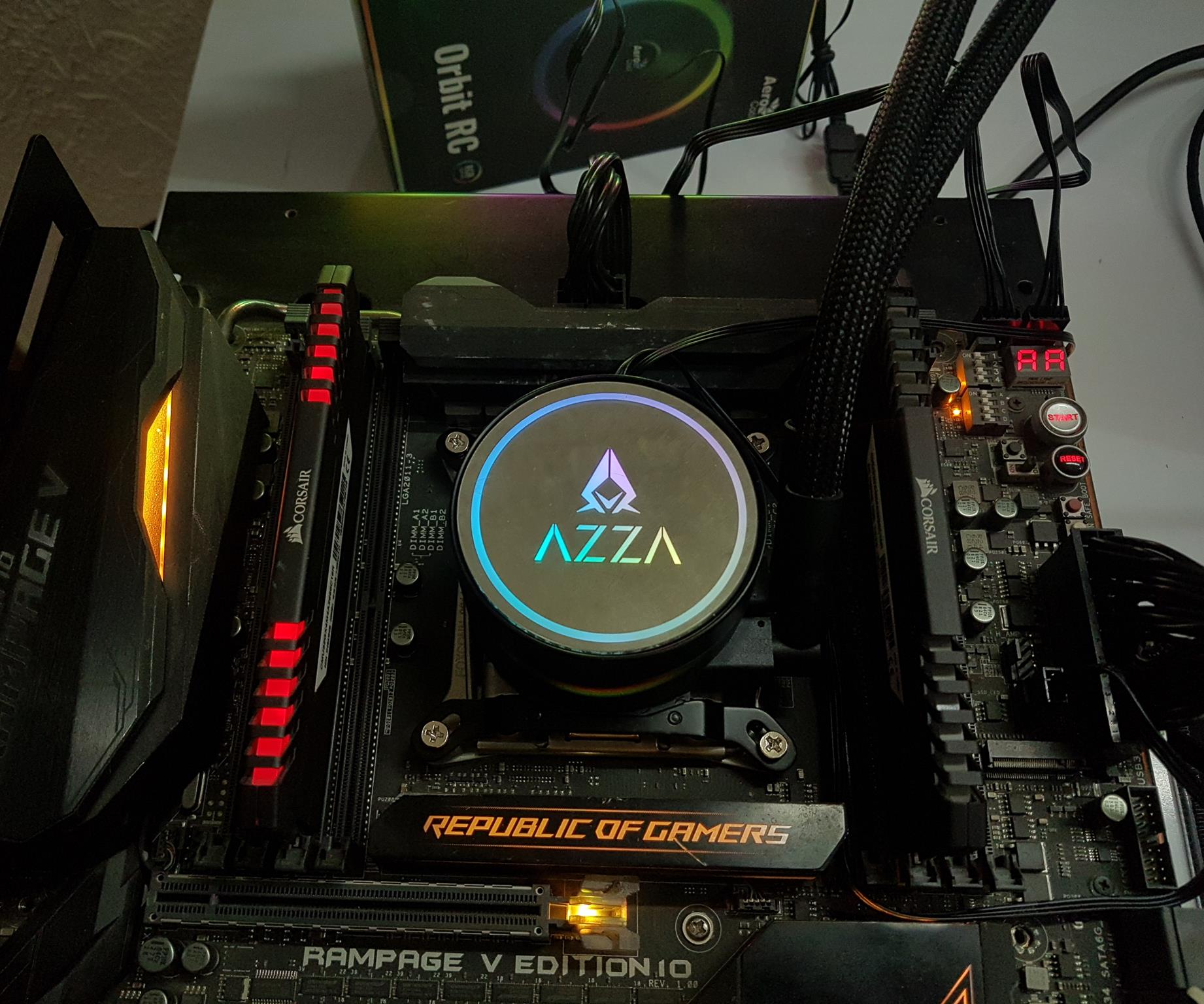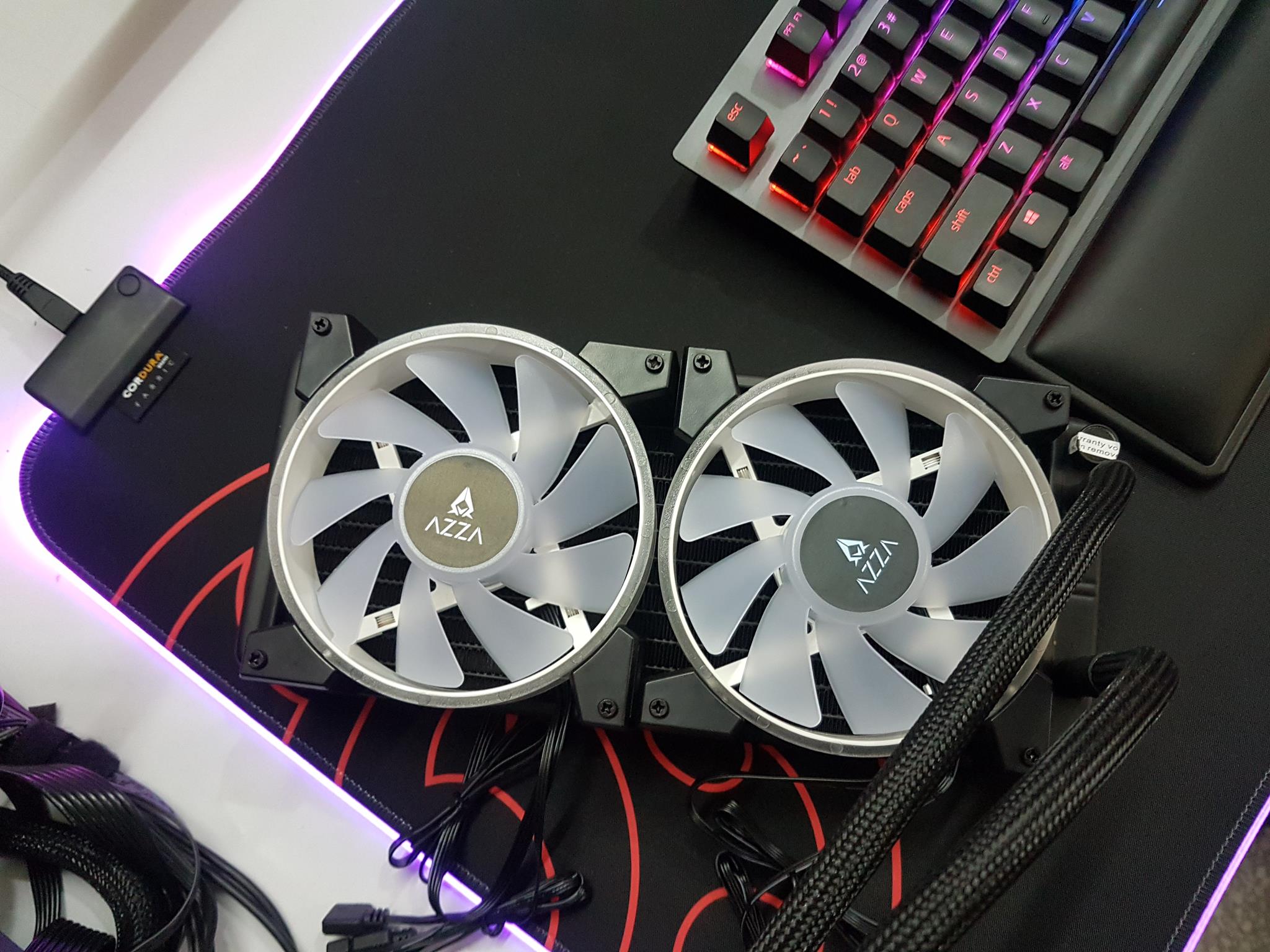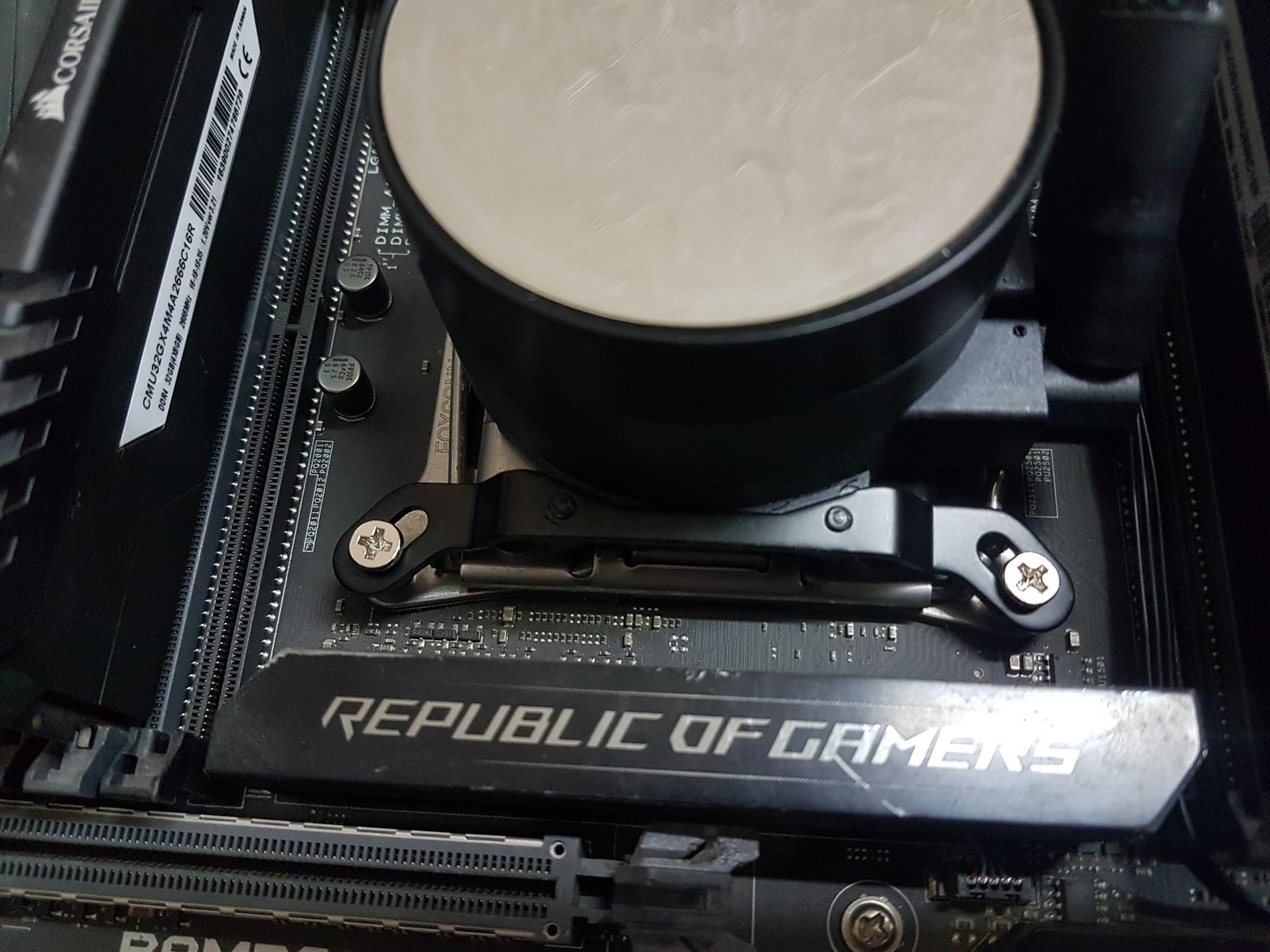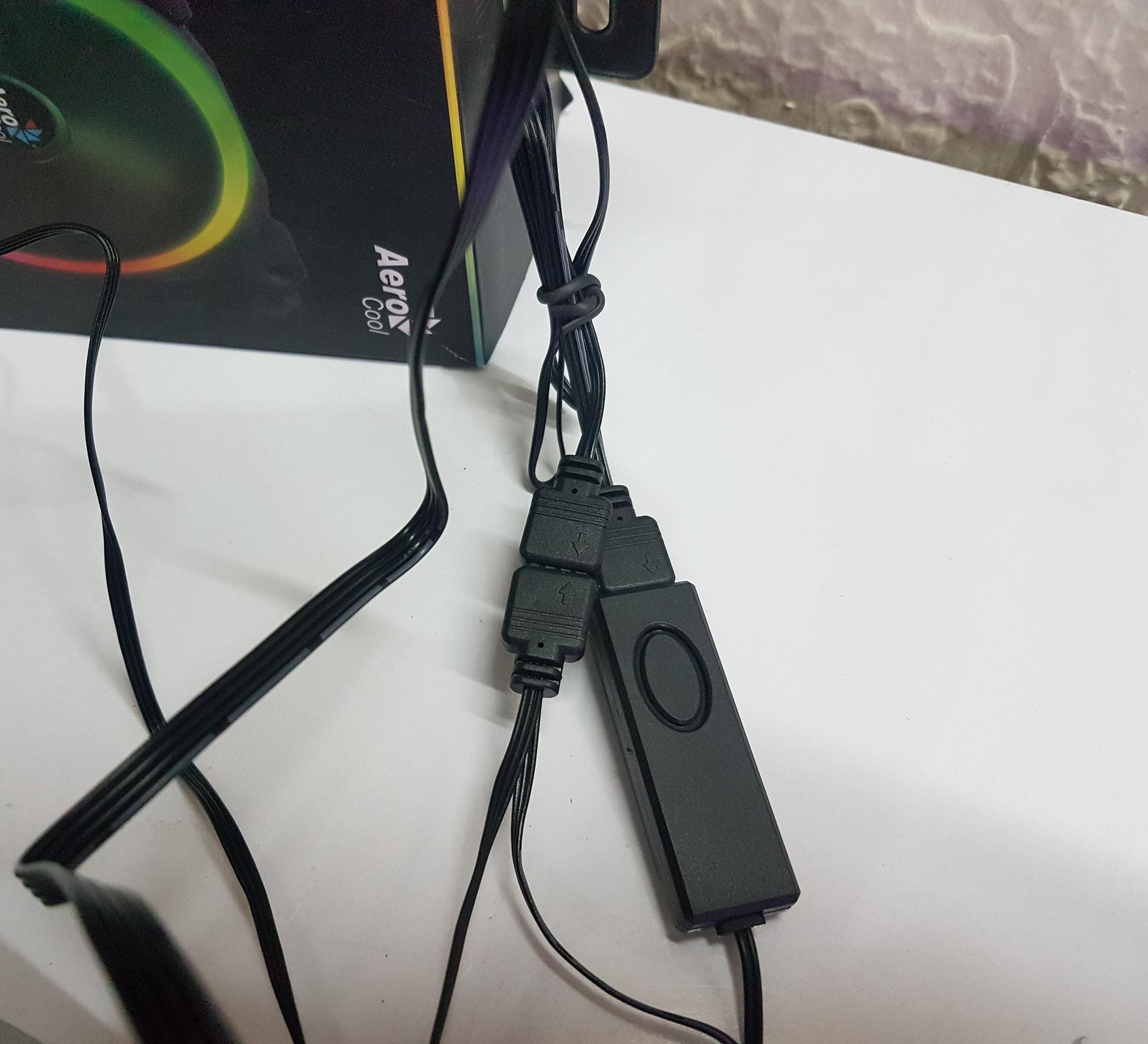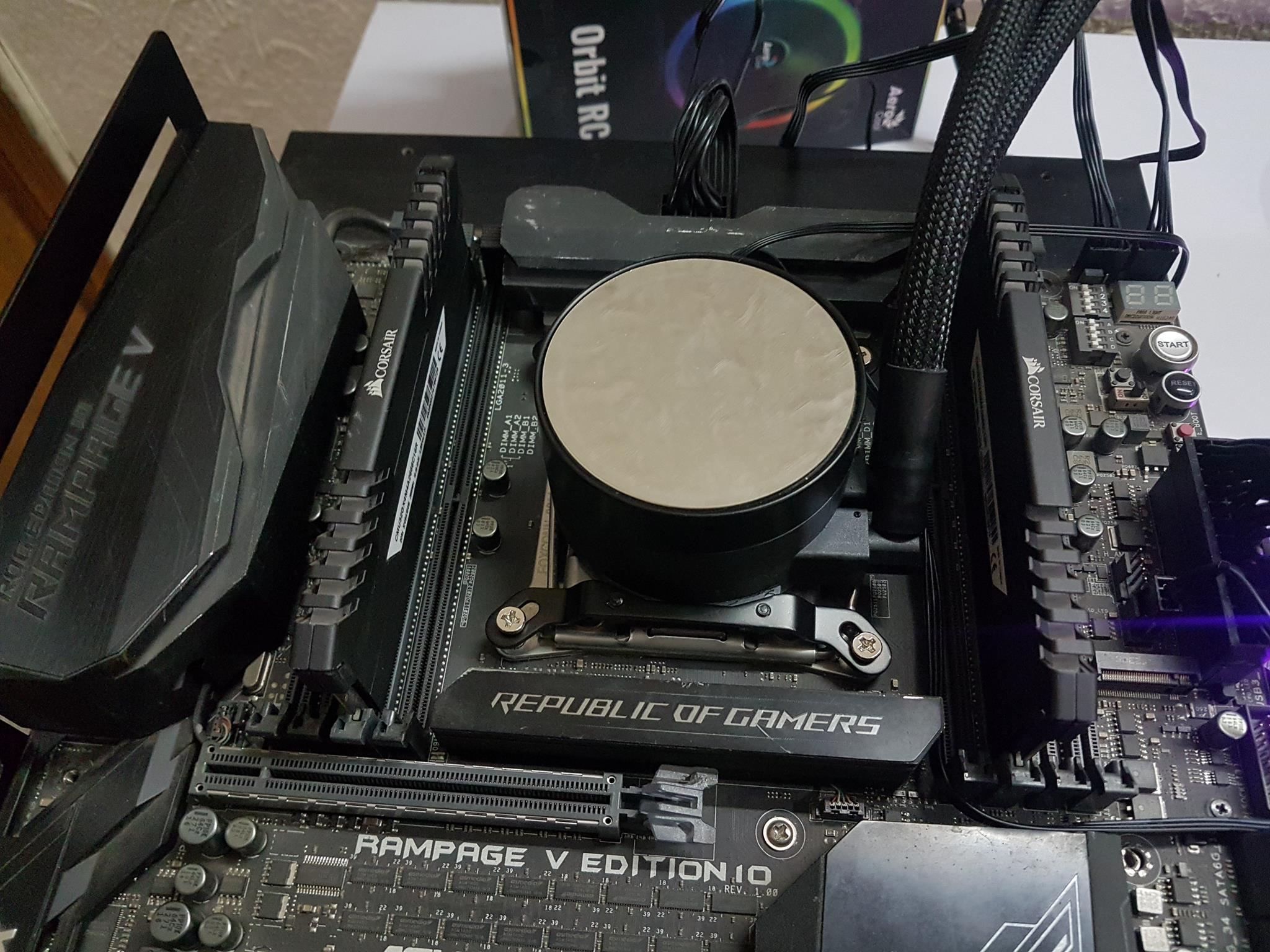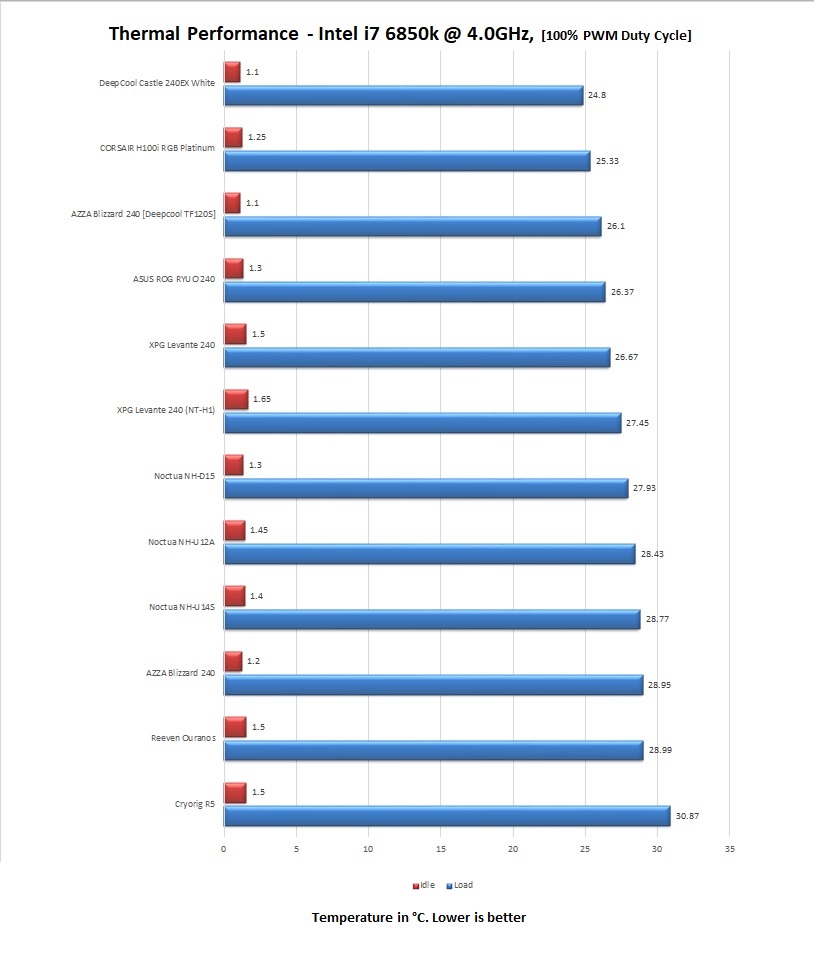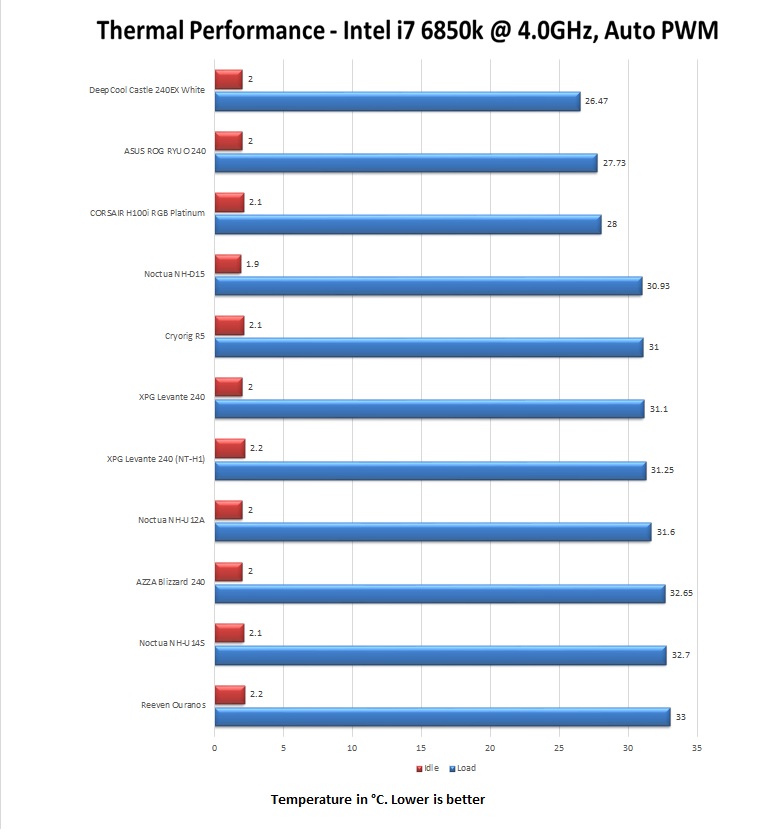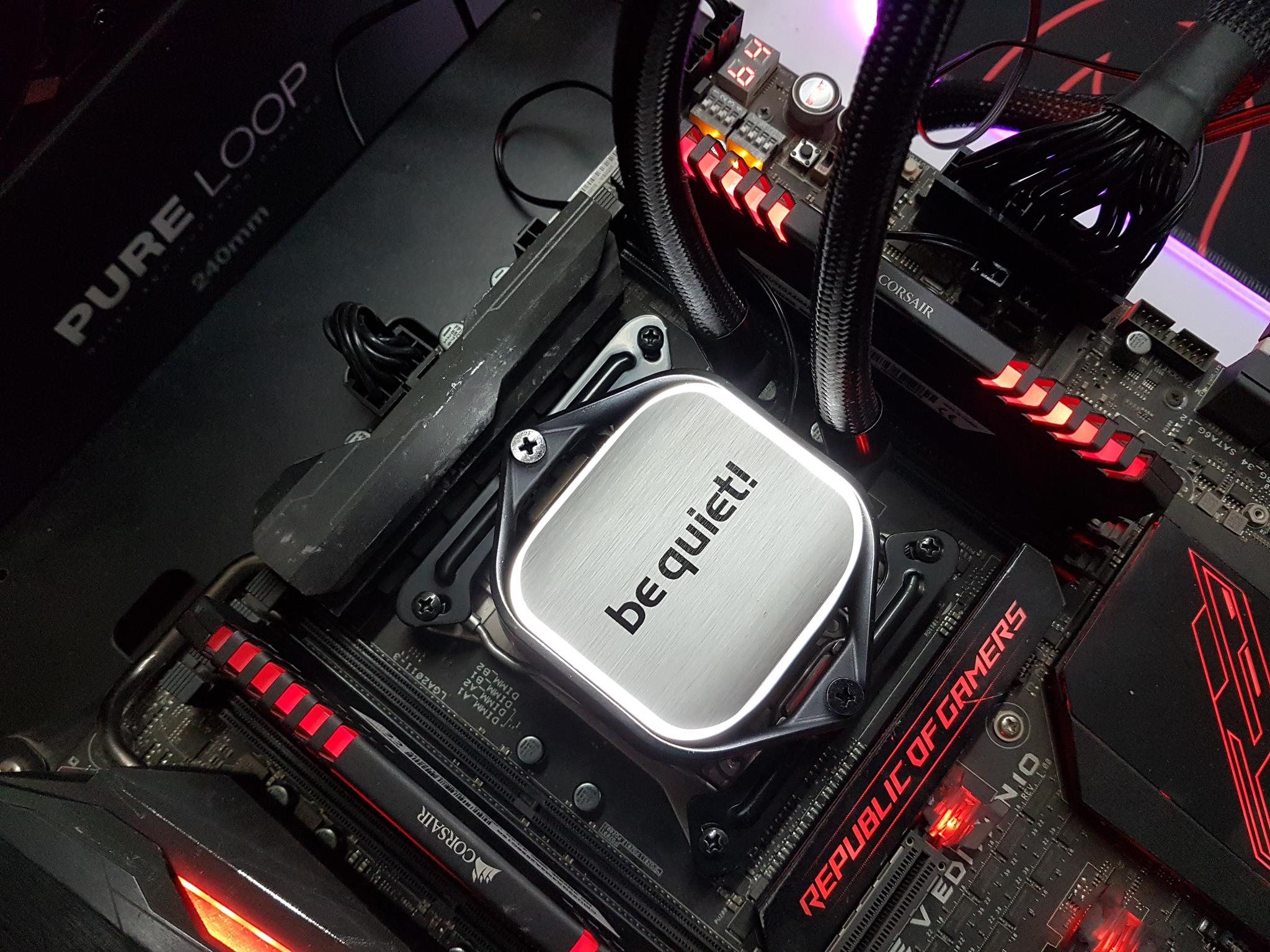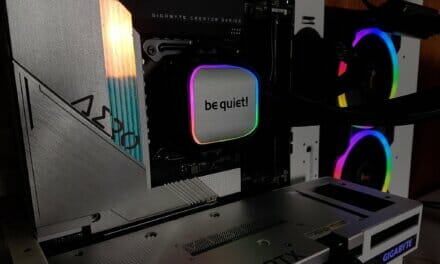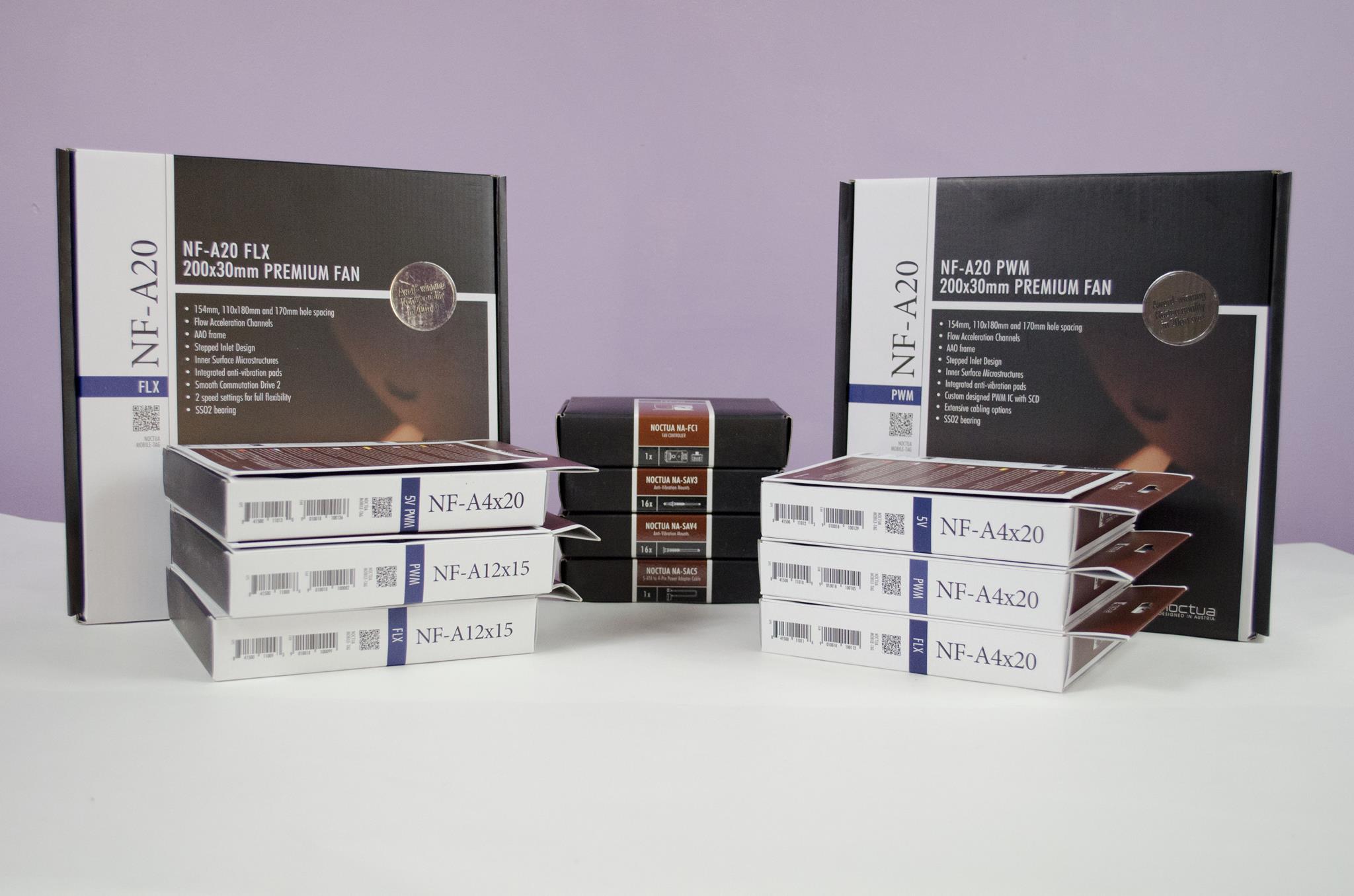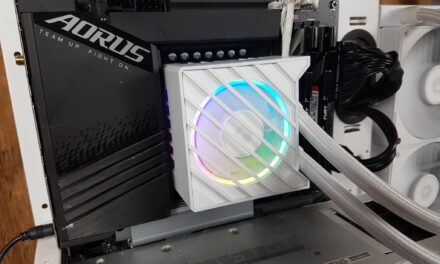
AZZA Blizzard 240 Cooler Review
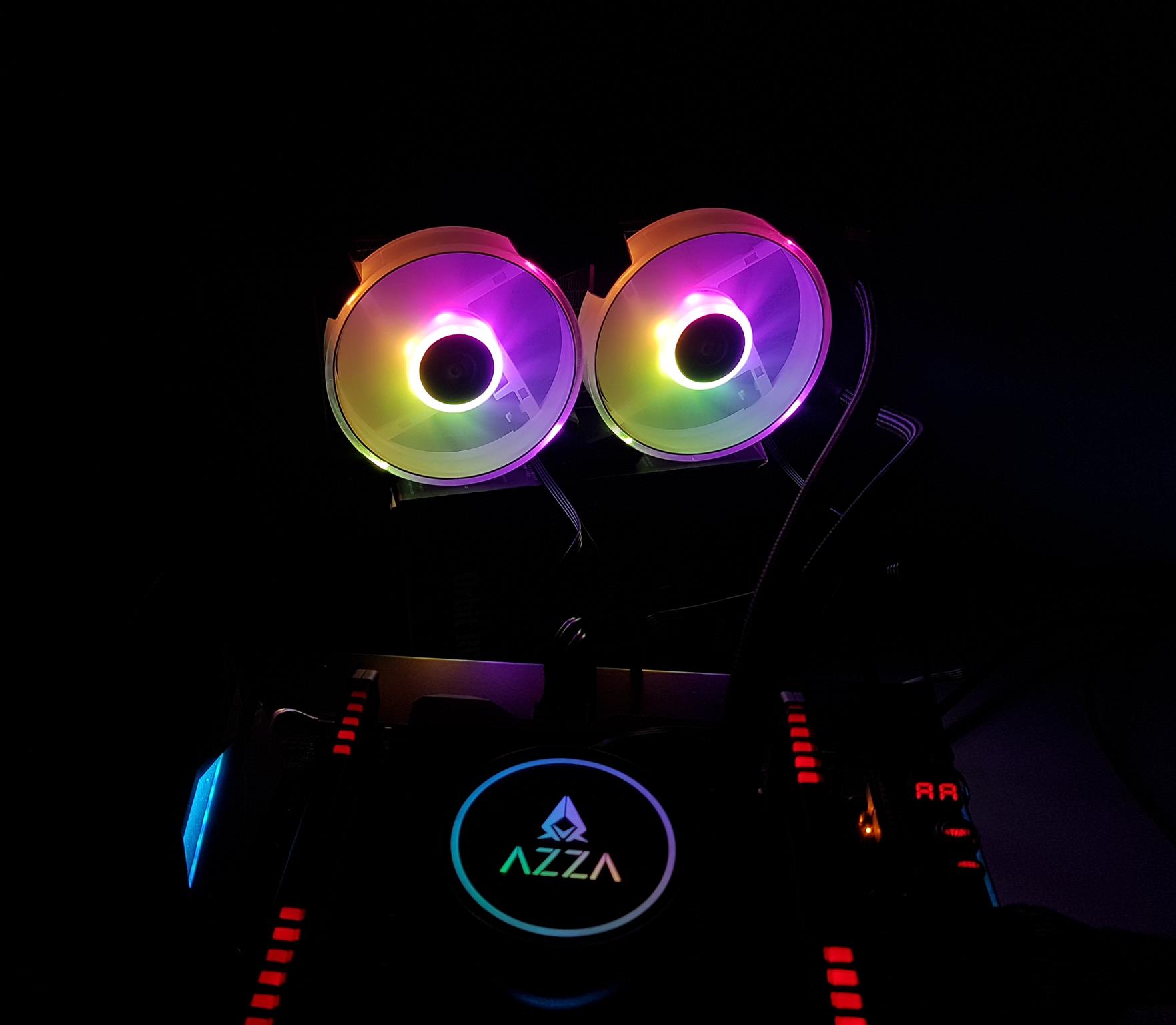
Introduction
AZZA is not a new name in the PC industry as the company dates back to 1996 where they started manufacturing motherboards as OEM products. From 2004 onwards they were manufacturing PC Chassis and PSU for XION as OEM products. It was 2009 when they started manufacturing and marketing products under the brand AZZA. Solano 1000 was their very first PC Chassis and ever since they have been making waves with some interesting and unique designs.
We recently did a roundup content on the high-end air coolers. It was quite a success and based on the community’s feedback we are planning another round-up content. This time the round-up content is on the best 240mm AIO coolers. We have chosen this size of the liquid cooler as it is still the most commonly used size in the liquid cooler category out of other available sizes which are 120mm, 280mm, and 360mm. We have reached out the over 30 brands and set ourselves a minimum of 15 coolers for the test. We are nearing our mark as the deliveries have started.
We will be doing individual contents of the coolers as well and starting with Blizzard 240 cooler from AZZATek. This cooler is a bit different than the originally released Blizzard series coolers with the change coming from the lighting effect on the block. They have changed the looks on the block and we are no more with the infinity mirror effect which was on the original coolers. I would say it is a nice change as the block still looks dope with AZZA branding in the center illuminated in an AURA of the colors. The radiator is made of aluminum and we are still seeing the same Hurricane-II digital RGB fans which were with the original design. This is not an Asetek design and I am not yet informed about the OEM of the cooler. The cooler has a TDP rating of 150W. Speaking of RGB show, the Hurricane-II fans are my personal favorite for this very aspect. The lighting effect is so sublime and eloquent that anyone would fall in love with the light show off these. The cooler is compatible with Intel LGA20xx/1366/1200/115x/775 sockets and AMD AM4/AM3+/AM3/AM2+/AM2/FM2+/FM2/FM1 sockets.
Item: Blizzard 240
Manufacturer: AZZA
Price: $89.99 MSRP [at the time of the review]
Specifications
Packaging and Unboxing
The cooler is shipped inside a black color cardboard box with AZZA styling.
I am seeing minimalistic information on the packing box and AZZA has only focused on what is important with this cooler. The cooler features:
- Digital RGB Lighting
- PTFE tubes
- RGB Pump Lighting
- Ultra-Efficient PWM LED Fans
The specifications of the cooler are printed in a tabular format. There is a large size white color area left blank on the bottom right. I am wondering about its possible use! The cooler is compatible with Intel LGA20xx/1366/1200/115x/775 sockets and AMD AM4/AM3+/AM3/AM2+/AM2/FM2+/FM2/FM1 sockets.
Opening the box will show a white color Styrofoam placed over the contents. The contents are tucked inside an egged carton for maximum safety during shipping.
Accessories
Following are included in the box:
- 1x 240mm Radiator and pump unit
- 2x Hurricane-II 120mm Fans
- 1x Intel Backplate
- 2x Intel Mounting Brackets
- 2x AMD Mounting Brackets
- 2x AMD Fasteners
- 4x Intel LGA20xx Screws
- 4x Intel LGA1200/115x Screws
- 2x AMD Mounting Screws
- 4x Intel/AMD Fastener Screws
- 8x Fan Long Screws
- 8x Radiator Small Screws
- 1x Thermal Paste
- 1x ARGB Controller
- 1x ARGB VDG Cable
- 1x 3-way PWM Splitter Cable
- 1x User Manual
Closer Look
It is time to take a closer look at the components. The cooler is compatible with Intel LGA20xx/1366/1200/115x/775 sockets and AMD AM4/AM3+/AM3/AM2+/AM2/FM2+/FM2/FM1 sockets.
RADIATOR
The AZZA Blizzard 240 is a 240mm CLC cooling solution. It has a 240mm radiator with 2x Hurricane-II digital RGB fans.
The dimension of the radiator is 2744 x 120 x 27mm. The thickness of the radiator is 27mm. With 25mm fans the overall thickness would be 53mm. The radiator has 63mm thickness with the barbs which is more than the 53mm of overall thickness with the installed fans. So, keep that in mind. The radiator has a 20 fins per inch one (FPI). There is a gap of 105mm between any two fan mounting holes on the radiator.
The radiator is made of aluminum hence it is lightweight. I am not sure of the OEM but it is not an Asetek design. The blocks on both ends of the radiator are not rectangular and have rounded edges. Fin stack is dense and taking into account the left and right side channels, it has total of 11 channels for water flow.
There are no protective sheets over the fins under the fan mounts. So, take care while mounting the fans as longer screws could damage the fins which would hamper the performance of the cooler. It is recommended to use the supplied long screws to mount the fans on to the radiators.
The heat shrinks on the barbs are tightly and neatly done but given their sturdiness and the length, it gives a total of 63mm thickness to the radiator from this perspective.
There are two stickers on the block end of the radiator. One is showing the part no or serial no of the unit whereas the other one is warning the user not to tamper with or remove the white color sticker on the port.
Don’t open the white-labeled port as it is for the factory use only otherwise the vacuumed pressure inside the loop will be lost. Our sample has a torn sticker already!
The tubes are firmly fitted on the radiator assembly and on the pump housing. The tubes are coated with leak-resistant Teflon (PTFE) making the tube anti-explosive and durable. The tubes run for a 390mm as per our measurement (Specifications show them to be running for 400mm). Please, keep in mind that this length includes the heat shrinks barbs portion as well. The tubes are not kinky and not that flexible either.
PUMP/BLOCK
The water block for the CPU measures 78×87.9×52.9mm. The housing is made of plastic material and has a black color finish. It has a circular design. The top section of the housing is in a dark black color finish.
There is a blue color protective sheet that does not come off with the white color small size sticker reminding the user to peel off the protective sheet. I had to scratch peeled it off from one corner. This was the same complaint I made with the Blizzard 360.
The picture shows the block’s top with the protective sheet removed. There is a highly reflective glass top. We have a circular ring on the border of the inner section which is a diffuser. The AZZA branding is also in the white color diffuser. These light up when powered on and are digital. The AZZA branding is fixed in its position so the user will have to carefully install the block so that the branding size remains up.
The tubes are installed in 90° mount on the base of the block to make them rotatable giving the user some room to play with the tubes while installing the cooler for the best fitment. Looking closely, you will notice that the barbs are installed towards the left side of the block, not in the middle.
There are two cables coming out from the right side of the block.
One is a 3-pin power cable measuring 315mm in length approximately. The second cable is an LED one with two headers (male and female). These are 5V 3-pin digital RGB LED connectors. The cable has a length of 410+46mm approximately. The block was quite dirty as is apparent from the picture. It is after some cleaning!
We can spot the two-tone colors on the housing from this angle. This side is plain.
This is the front side of the block and has a plain surface.
The pump has a pressure head rating of 1.25m with a flow rate of 1.2 L/m. The noise rating is ≤ 26.9 dBA. The life span is rated at 40000 H. There is no information regarding the power consumption or the bearing types.
The base has a size of 49x59mm which is large enough to cover the CPU IHS that we will be using for the testing. I7 6850k has a surface area of approximately 37x37mm. The base is implemented in a polished finish cooper. The copper base plate is not circular rather has an almost rectangular design with rounded edges.
FAN
I am seeing the same beautiful Hurricane-II digital RGB fans with the Blizzard 240 as well. The frame of the fan is made of plexiglass and there are dual rings on the outer side. There are 4 ARGB LEDs inside the rings. The inner side of the fan has a white color coating for even diffusion. Each fan has 7 translucent blades and 6 ARGB LEDs in the center (6 is my guess). The center has an AZZA branded logo on it.
This angle shows what I wrote about the Plexi frame above.
There is a 4-arm assembly on the backside. Each arm has LED cables going towards each corner to power the ARGB LED in that area. There is a black color sticker in the middle. The fans are made in China.
There are two flat 4-pin PWM power and ARGB LED cables coming out of the fans. PWM cable’s length is approximately 626mm and it is 560+198mm for the digital RGB LED cable.
Speaking of the specification of the fans, here they are:
| Dimension | 120x120x25mm |
| Type | 4-pin PWM Connector |
| Speed | 1000-1800±0% |
| Airflow | 50.5 CFM |
| Air Pressure | 1.82 mmH₂O |
| Noise | 25.9 dB(A) |
| Bearing Type | Hydro Bearing |
| Lifespan | 10000 at 25°C |
| ARGB Connector | 5V,3pin ARGB Male & Female Header |
They have upped the airflow and static pressure rating of the fans a bit and surprisingly lowered the noise level rating. When I reviewed the Blizzard 360 version, I was of the view that the cooler has more cooling capacity but these fans are somewhat lacking. This time I will test the cooler with the powerful fans to verify that impression of mine.
Cables and Controller
Let’s take a look at the bundled accessories.
AZZA has bundled one 3-way PWM splitter cable. The length of each cable in the splitter cable is 445mm approximately. I am wondering what 3-way splitter cable though when we have two fans with this cooler!
There is a Motherboard ARGB Sync cable (VDG) for Gigabyte motherboards only. This will allow the user to connect the daisy-chained fans and pump to be connected to the 5V lighting header (RGB Fusion) of the Gigabyte motherboards. To connect the daisy-chained set up on the other brand motherboards, simply use the connector of the fan/pump for this purpose.
AZZA has provided a dedicated controller in the box in case the user does not have a supported motherboard with lighting headers. It has a single button which is used to toggle the lighting mode. There is no speed or brightness control feature on this controller. The controller is using a SATA connector to power itself
The controller has a 3-pin ARGB pin format header on the one side to which the ARGB cable is connected. There is a 2-pin port on the controller as well to which the Reset cable of the PC Chassis can be connected which will allow the user to switch lighting modes using the Reset button of the chassis.
RGB Lighting
The controller has 10 pre-defined modes on it including the Rainbow RGB and static modes. I love the even diffusion and vivid lighting on the block and the fans as they look totally dope in person.
Here are some pictures for your eye pleasure.

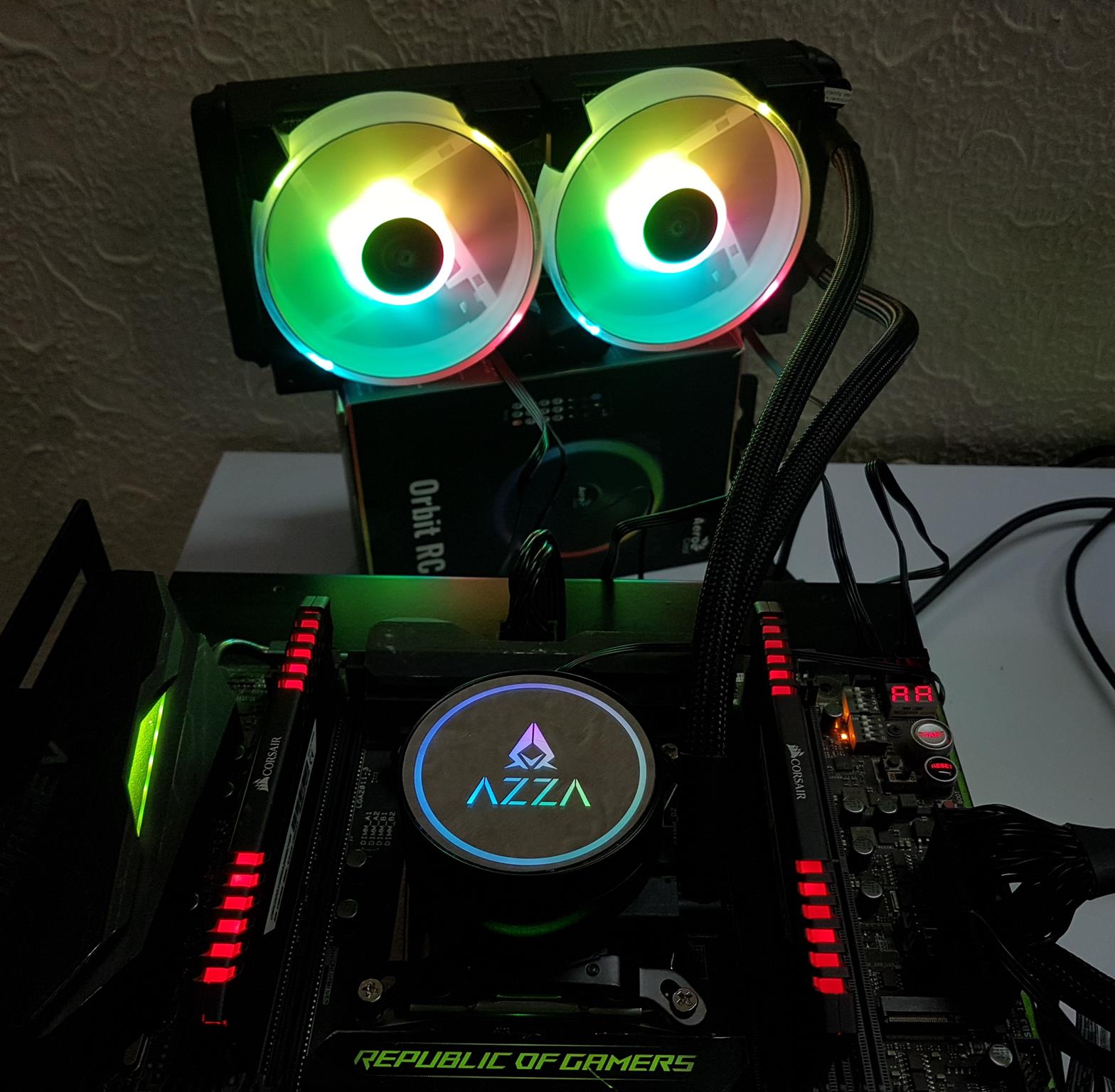
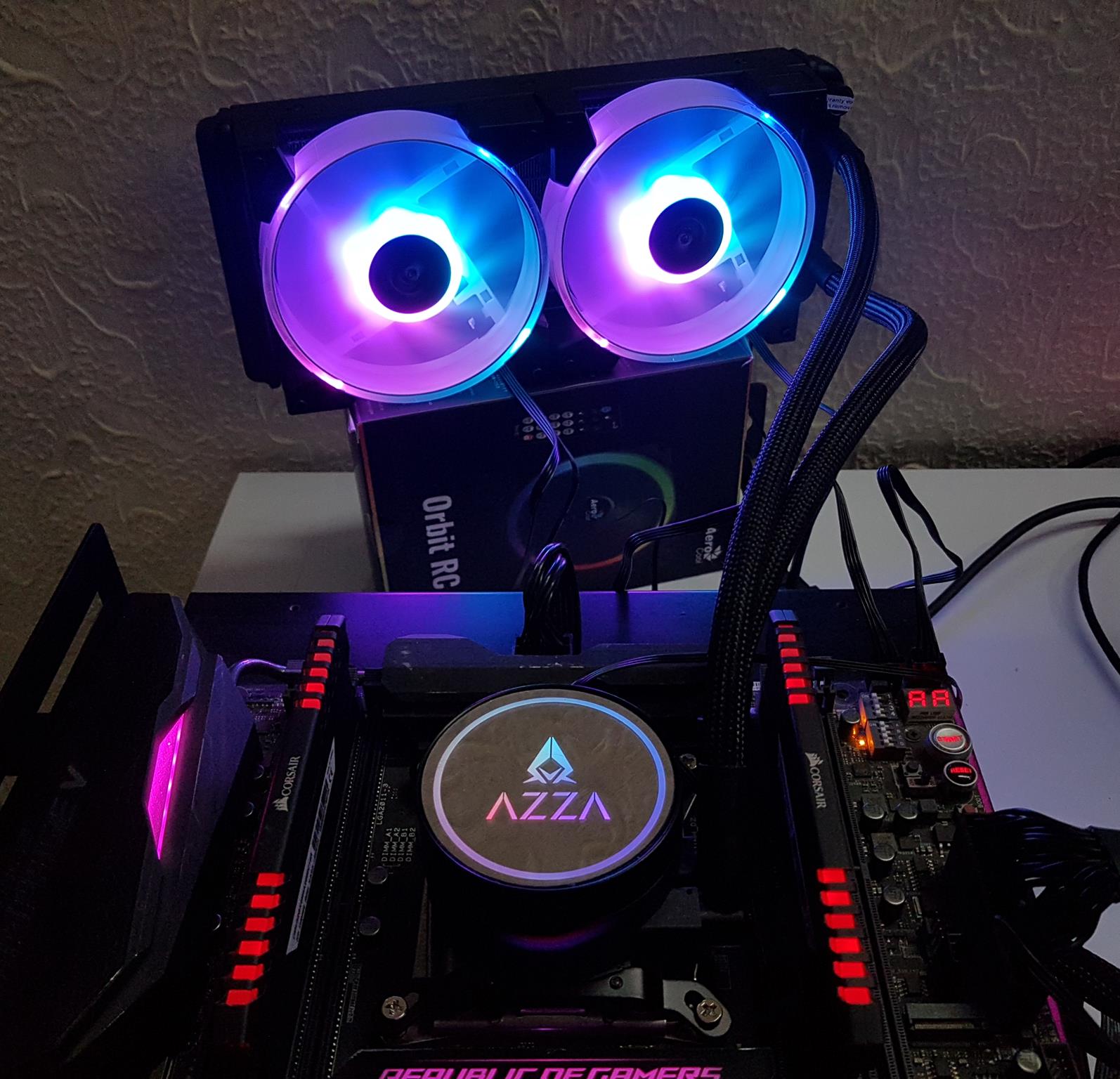
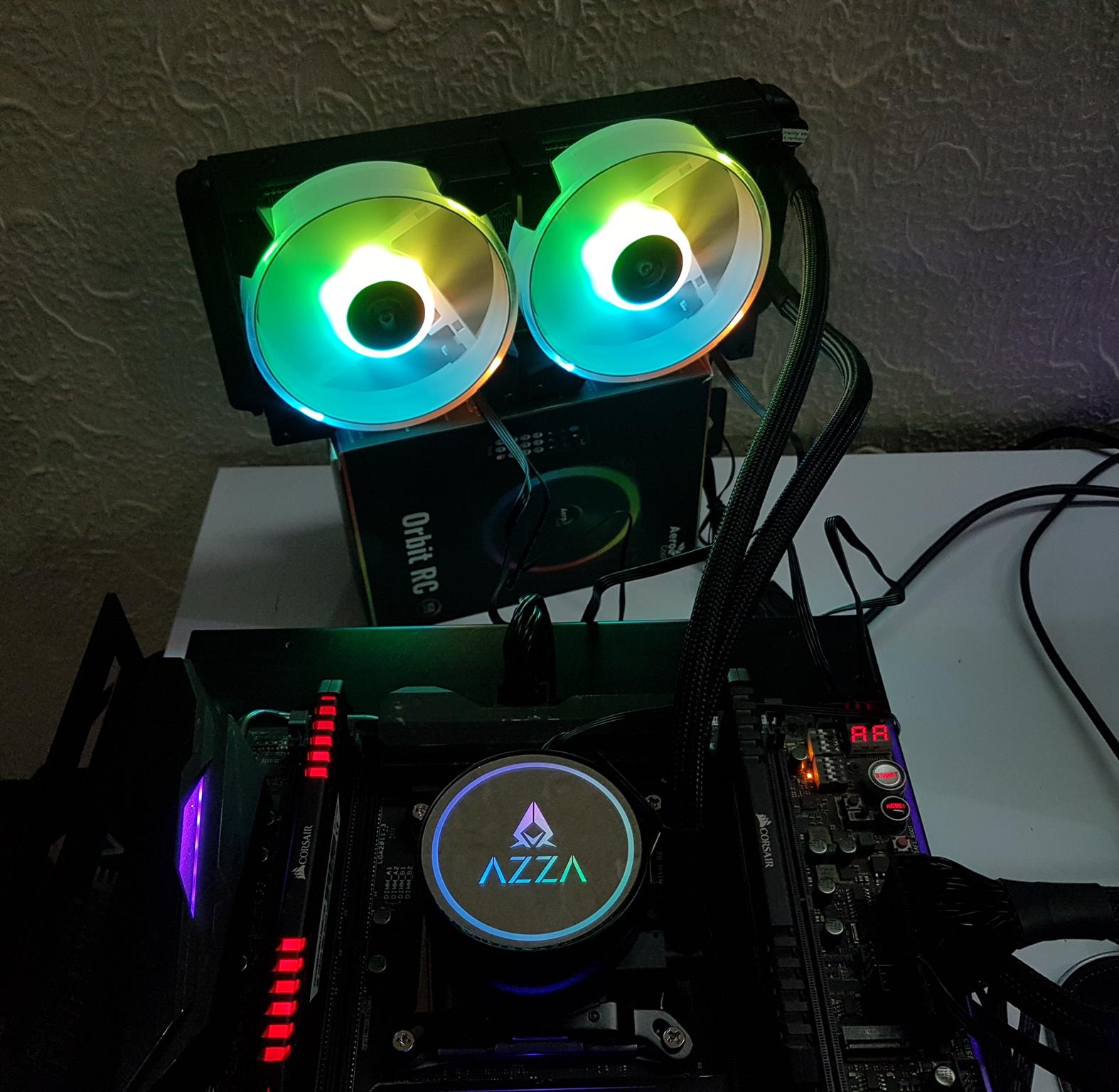
Installation
We have tested the cooler on the X99 platform using the 2011-3 socket. Installation is simple and as under:
Install the Intel brackets to the pump housing using 4x small size black color screws. The screws go inside from the base side.
Install the fans on the radiators. Peel off the protective cover from the copper base. Apply the thermal paste on the CPU IHS.
Place the block on the CPU by aligning the outermost holes on the Intel mounting brackets/fasteners with the holes on the socket. Use the Intel LGA-2011 screws (screws with a thicker threaded side) to secure the block on the CPU socket.
Daisy chain the fans and pump ARGB LED cables and connect the ARGB LED to the source (motherboard or controller). Connect the fans’ PWM connectors to the Y-cable and connect the Y-Cable’s PWM connector to the 4-pin PWM header, preferably the CPU Fan header of the motherboard. Connect the 3-pin power cable of the pump unit to the fan header/source. This would complete the installation.
Since AZZA is not using standoffs for the installation, the placement of the block on the CPU and installing it on the socket can be tricky as it involves some guesswork at the user end. This would complicate further if the installation is to be done inside the chassis. I made the same observation when reviewed their Blizzard 360.
There is no clearance issue with respect to the DIMM slots and the first PCIe slot. Make sure your chassis has clearance for a 240mm radiator.
Testing Methodology
Following test benches have been used: –
- Asus Rampage V Edition 10
- Intel i7 6850k
- CORSAIR VENGEANCE RED 16GB @ 2666MHz
- Colorful GeForce GTX 1050Ti Vulkan
- Samsung 840 EVO 250GB SSD
- Cooler Master MWE 650W Gold
- Custom open-air test bench
The software used for testing and monitoring include:
- Asus Real Bench v 2.56 (Intel)
- Real Temp GT v 3.70 (Intel)
Here is the settings table for testing:
| OC Clock (MHz) | 4100 |
| OC Voltage (V) | 1.21 |
| Turbo Boost | Disabled |
| C-States | Disabled |
| Speed Step | Disabled |
| Thermal Paste | Noctua NT-H1 |
| Test Run Time | 60 minutes |
| Idling Time | 15 minutes |
| Fan Speed | Manually set to run at 100% speed.
Auto PWM using CPU Fan Header |
| Pump Speed | Connected to the AIO Pump header to run at 100% speed |
We are using Noctua NT-H1 thermal paste for coolers testing. Using the same thermal paste for all coolers would ensure standardization. Delta temperatures are reported on the graphs. The testing is done on an open-air bench system. Once inside the chassis, the temperatures are expected to rise and would largely depend upon the optimal airflow inside the chassis.
Not every run of the stress test may yield the same result. This could well be due to many factors like mounting pressure, thermal paste application, varying ambient temperature. Not to mention the silicon differences even among the same category of the chips. Hence, it is pertinent to mention the testing methodology along with the specifics.
Let’s take a look at the results.
100% PWM Cycle
Auto PWM
We have a decent performance from the AZZA Blizzard 240. The gaming temps would be lower than this. To verify my impression that the Hurricane-II digital fans might not be cutting this cooler its full cooler potential, I replaced the Hurricane-II fans with the DeepCool TF120S fans, and voila the temps dropped by almost 3°C which is a significant drop bringing the cooler on the third slot with a marginal difference from the top two contenders.
Acoustic
The noise level at 100% PWM duty cycle was measured at 51 dB(A) with an ambient sound level of 36 dB(A). The fans are loud at full speed.
Conclusion
The Blizzard series of AIO coolers from AZZA is available in three sizes; 120mm, 240mm, and 360mm. We took a spin on their Blizzard 240 CPU liquid cooler. The cooler is compatible with Intel LGA775/1366/115x/1200/20xx sockets and AMD AM4/AM3+/AM3/AM2+/AM2/FM2+/FM2/FM1 sockets. The OEM of the unit is not confirmed.
The unit has an aluminum radiator measuring 3274 x 120 x 27mm. The thickness of the radiator is 27mm. The overall thickness would be 53mm after installing the fans. The radiator has 20 FPI. The soft tubing is made from an upgraded anti-explosion rubber tube with Teflon coating and running to 390mm in length. Standing at 150W rated TDP the cooler is expected to handle the job fairly.
AZZA has changed the block design from the infinity mirror to simple digital lighting under the lid. The block has a size of 78.4×87.9×52.9mm. The housing of the pump unit is in matte black in light and darker shades in a circular design. The unit has a copper base that measures approximately 49x59mm and is large enough to cover any supported socket’s CPU IHS. There is an AZZA brand logo in the center of the glass top. This logo is fixed and the user would have to keep that in mind while installing the unit so that AZZA text remains upside.
The cooler comes with two Hurricane-II digital RGB fans. The fan speed is 1000 ~ 1800±10% RPM. The maximum airflow on 12VDC is 50.5CFM. The noise level is rated at 25.9 dB(A). The maximum static pressure is 1.82mmH₂O. The fans are using the Hydro Bearings. A 3-way PWM splitter cable is provided as well. These fans would give the user a killer lighting show. AZZA has provided a dedicated SATA powered controller with 10 pre-defined modes to control the lighting effects. These are compatible with ASRock Polychrome Sync, GIGABYTE RGB Fusion, ASUS AURA Sync, and MSI MYSTIC Light sync using 5V lighting headers as well. The user can also connect the Reset button cable of the PC chassis to the controller and use the Reset button to toggle the lighting modes.
The installation is relatively easy though in my opinion, AZZA still should use standoffs which would make the installation more convenient. I have checked the cooler’s compatibility on Intel LGA1200 by installing it on Z490 AORUS PRO AX motherboard confirming that it is compatible with that socket. No such compatibility information is printed on the packing box.
The AZZA Blizzard 240 is listed at $89.99 at the time of the review. AZZA is offering 3 years limited warranty on these coolers. We tested the cooler on the Intel LGA-2011(v3) test bench. It has performed decently if not the best. Though this time around I have tested the cooler with different fans and saw a temperature drop of 3°C confirming my initial impression that the Hurricane-II digital fans are somewhat lacking on the radiator as these fans would do better for case airflow.
Many thanks to AZZATek for sending in their Blizzard 240 cooler for our 2021 AIO cooler roundup comparison. We’ve reached out to most major brands in an effort to compare the best AIO coolers of 2020 against each other and let you know which ones come out on top. Please make sure to check out our 2021 AIO COOLER ROUNDUP and again, thanks to all the companies taking part.
| Brand Website | Cooler Review |
| AZZA | Blizzard 240 |
| SilverStone | IceGem 240 |
| Fractal Design | Celcius+ S24 PRISMA |
| CORSAIR | H100i RGB Platinum |
| Antec | Neptune 240 |
| XPG | Levante 240 |
| ARTIC | Liquid Freezer-II |
| EK Water Blocks | EK-AIO 240 |
| ID-Cooling | Aura Flow X 240 |
| Cooler Master | Master Liquid ML240L ARGB V2 |
| ASUS | ROG RYUO 240 |
| Enermax | Aquafusion 240 |
| DeepCool | Castle 240EX White |
| AeroCool | P7 L240 or Mirage 240 |
| Reeven | Naia 240 |
| Lian Li | Galahad |
| be quiet! | Pure Loop 240 |

